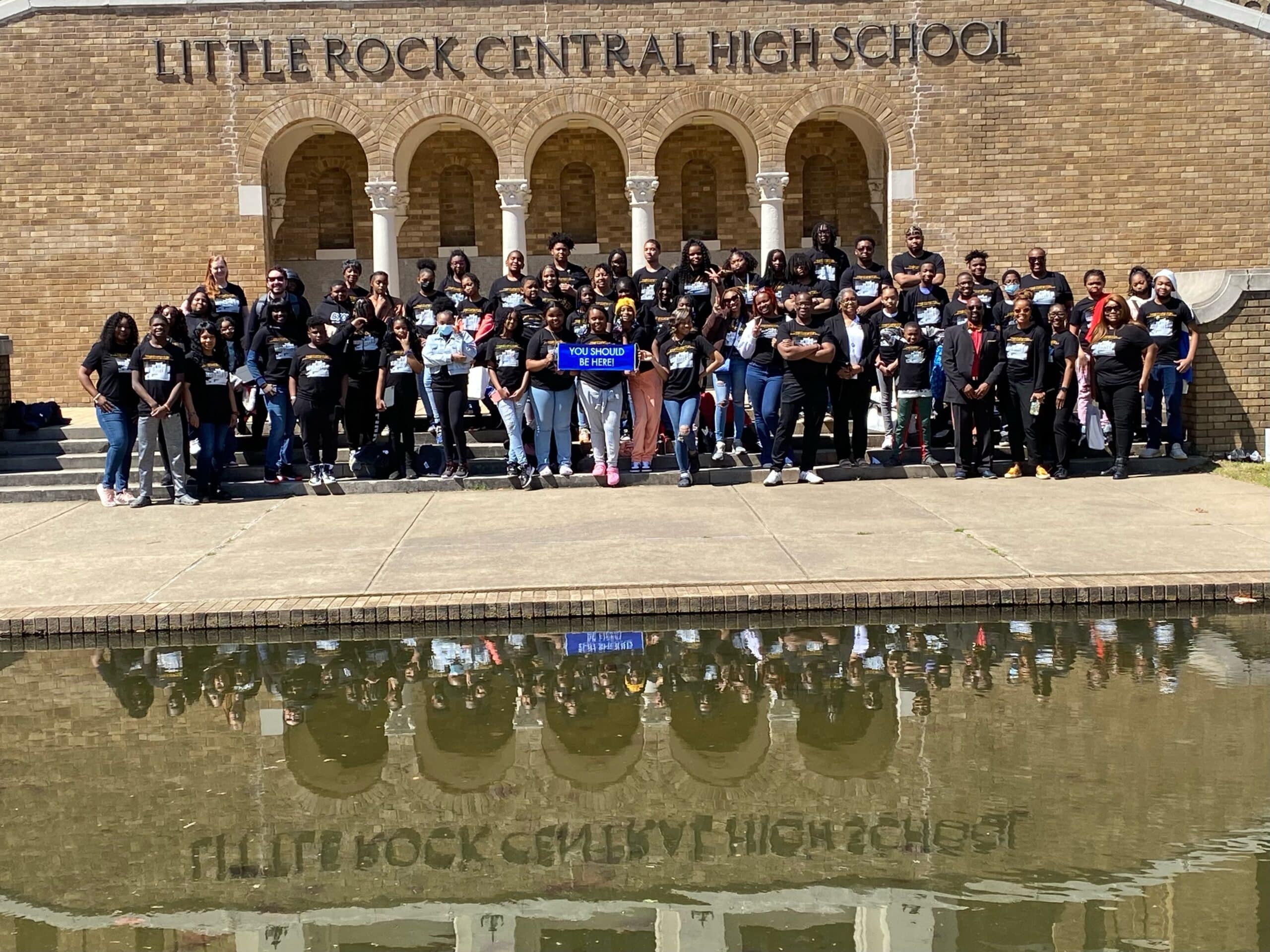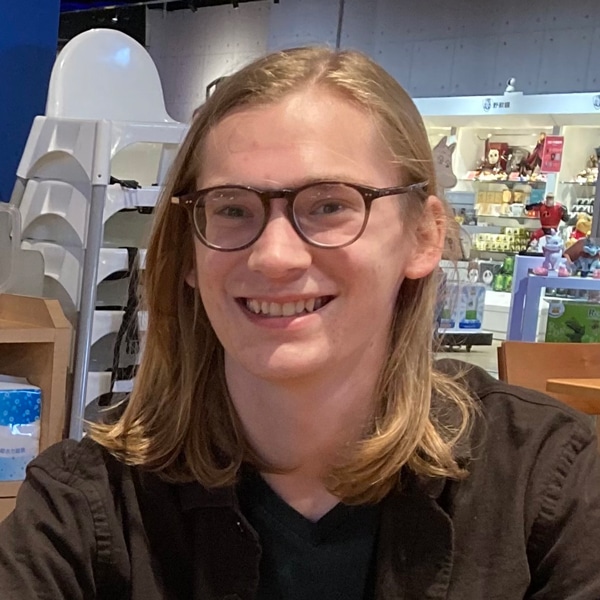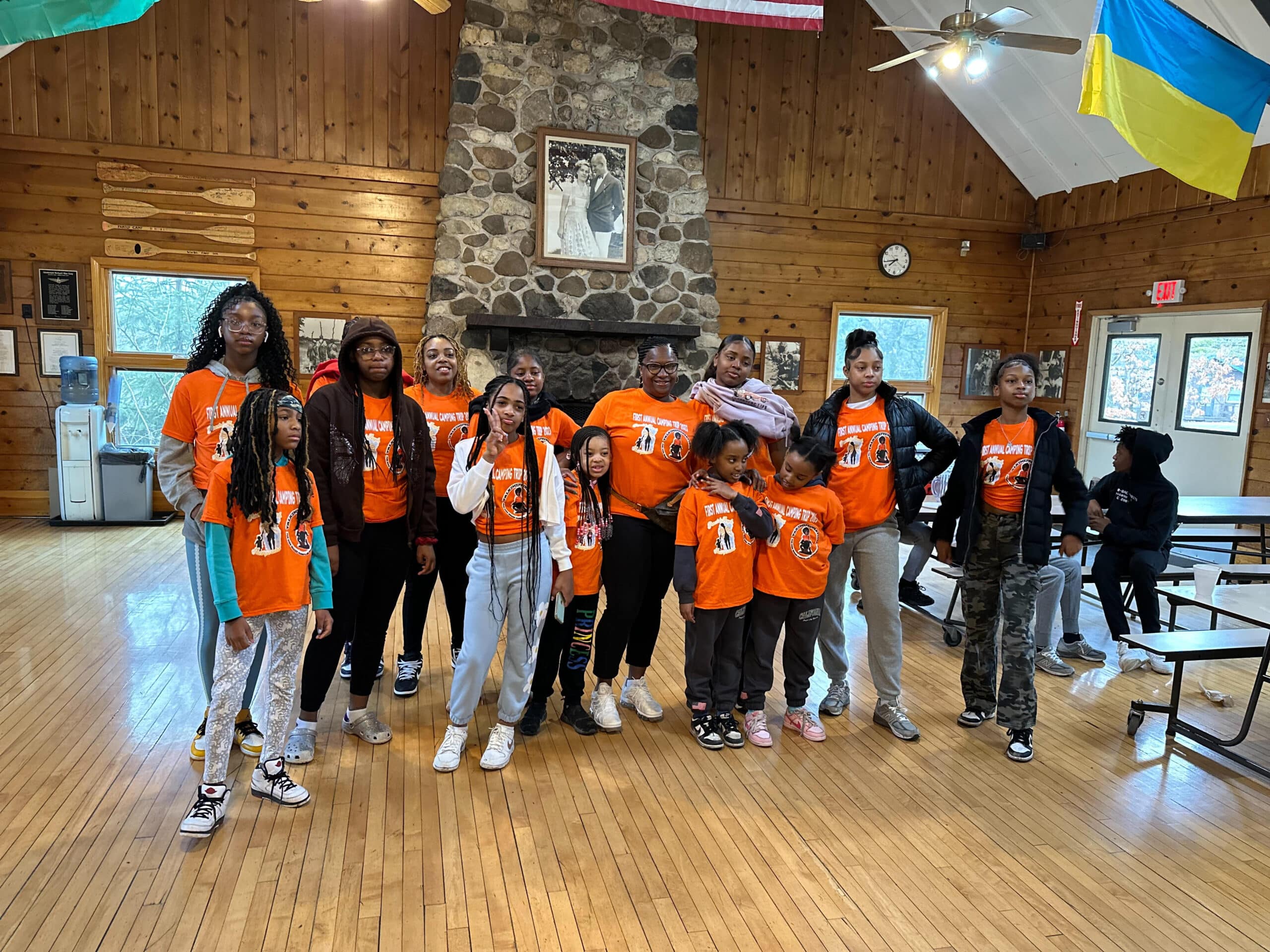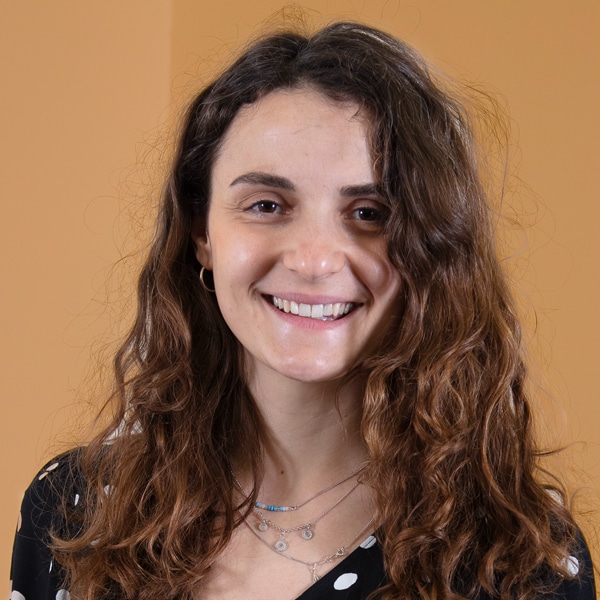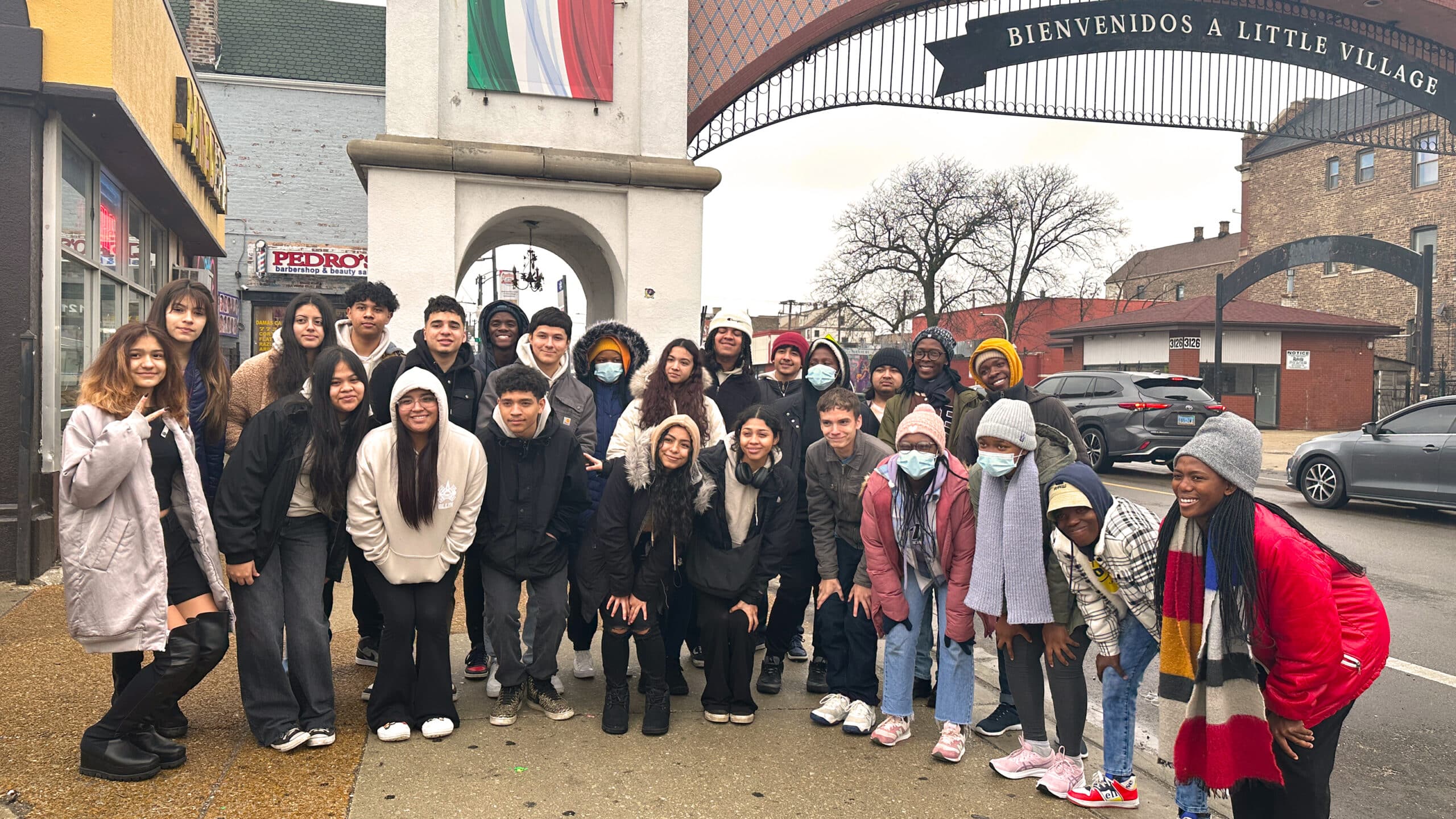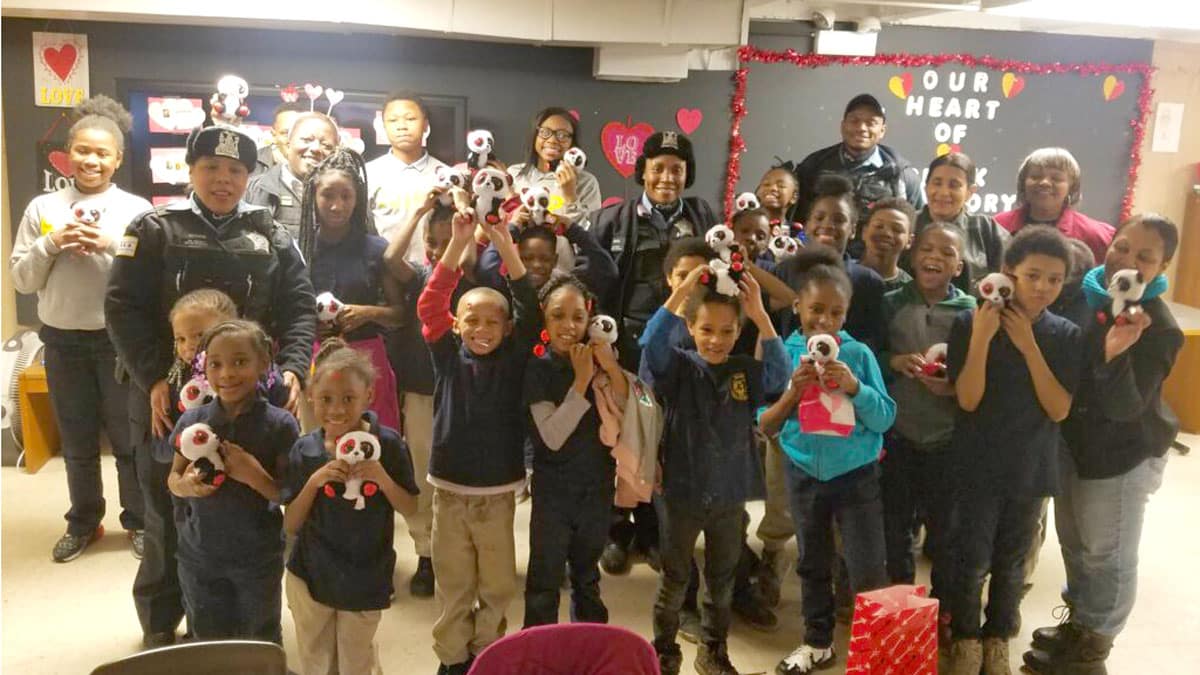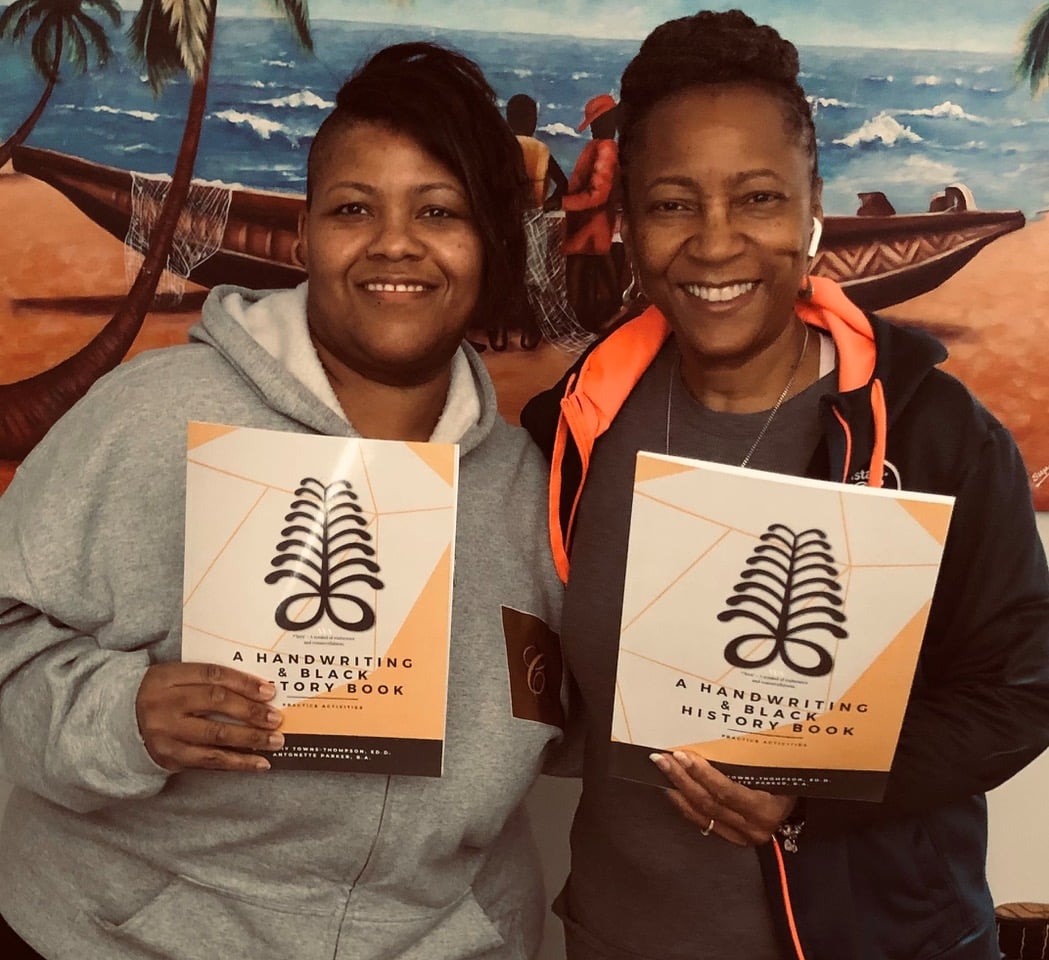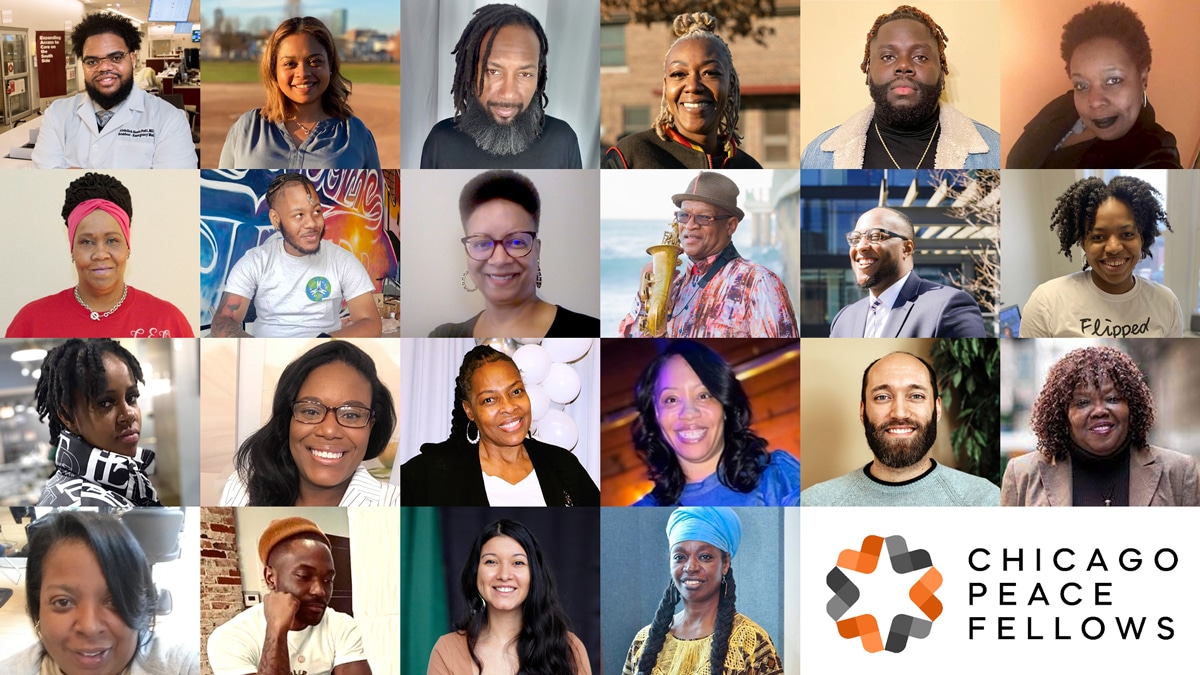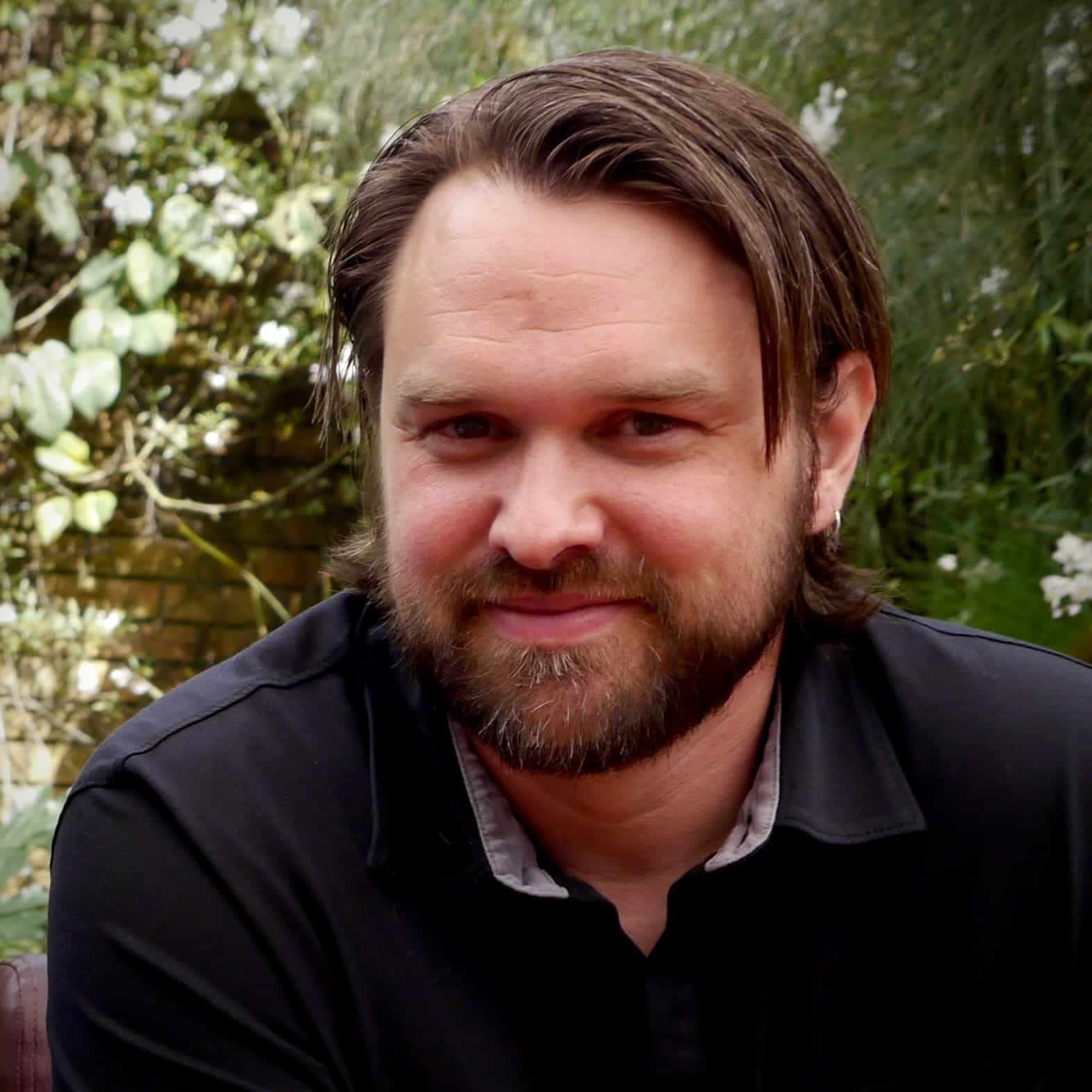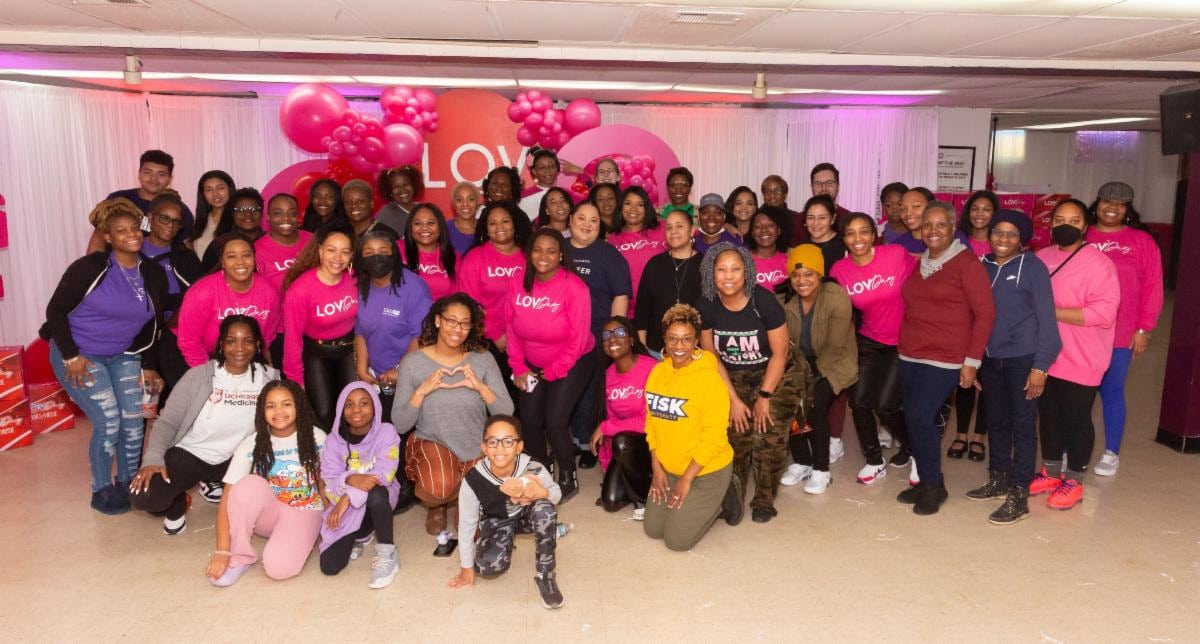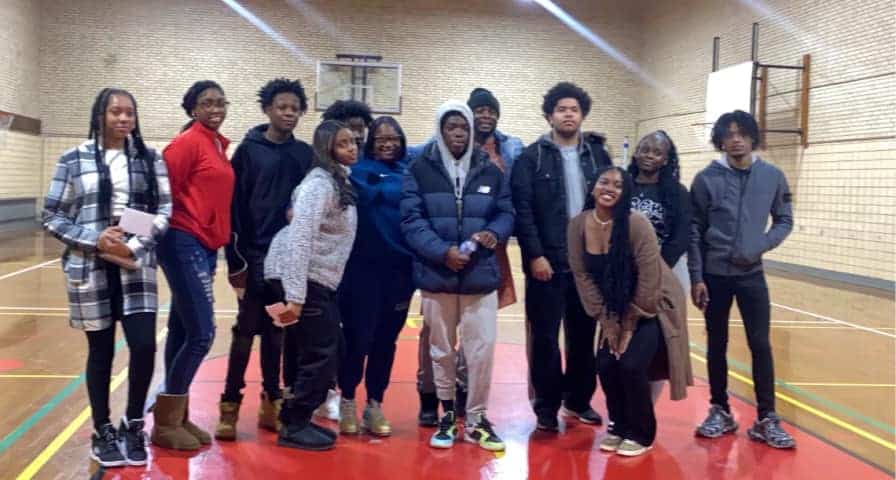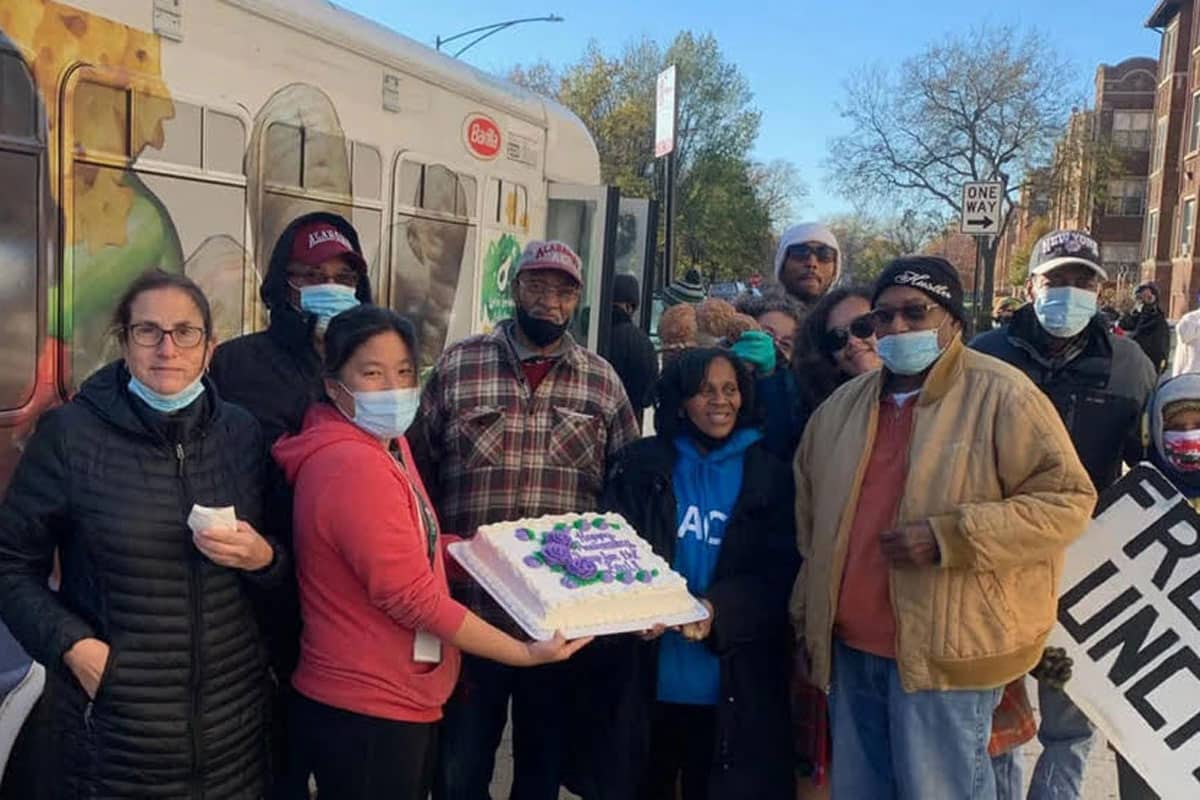Students Visit Little Rock to Explore the Civil Rights Movement
On March 28, the LUV Institute arranged for 60 middle and high school students to travel to Little Rock, Arkansas, to learn about the Little Rock Nine, the group of nine Black students who enrolled at the formerly all-white Central High School in Little Rock, Arkansas, in 1957. The Love, Unity & Values (LUV) Institute has been working with underserved youth since 2012 to inspire hope and empower them with economic opportunities while building resiliency and social-emotional competencies. Cosette Nazon-Wilburn, Executive Director of the LUV Institute and a 2020 Chicago Peace Fellow, formed partnerships between the LUV Institute, local schools, the Illinois State Board of Education (ISBE), and a community of teachers to facilitate the trip.
Students at University of Chicago Charter School and Ariel Community Academy participated as a part of LUV Institute’s bi-weekly Media Empowerment Program. LUV was able to expand the program this year through funding from the ISBE’s Phillip Jackson Freedom Schools Grant. The LUV Institute has held Journey to My Better Self programs for the past eight years, but this is the first year that the program has included an out of state trip. The programs prepare youth and young adults ages 16-24 to be job-ready for economically sustainable employment in high-growth industries and occupations. The Media Empowerment Program focuses on training students in journalism and storytelling.
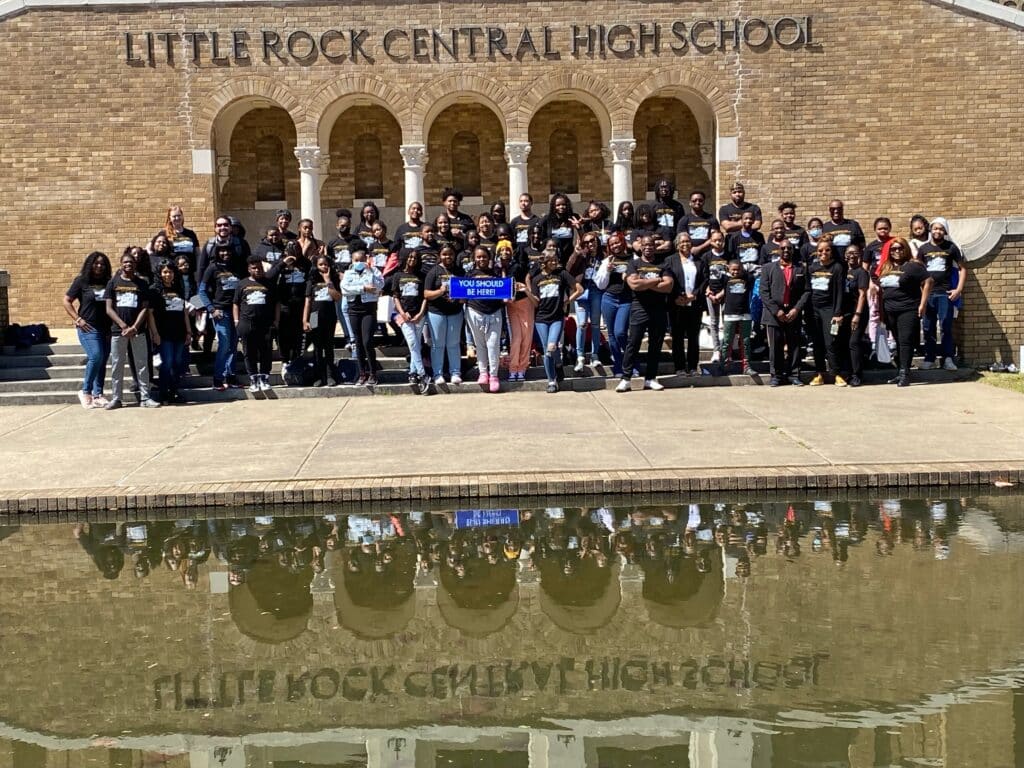
The LUV Institute also hired teachers from University of Chicago Charter School and Ariel Community Academy with funding from theFreedom Schools Grant. The grant is intended to fund a Freedom Schools network, offering a research-based, multicultural curriculum during the summer and/or school year to improve outcomes for low-income students. This funding allowed the LUV Institute to pay particular attention to hiring teachers from neighborhood schools to take part in the program. Each teacher was paid $60 an hour, which is higher than what teachers are usually paid to work for afterschool programs. By hiring neighborhood teachers, the LUV Institute not only contributed to the community of teachers but also invested in the schools they teach in. Teachers, deans, and administrators also learned restorative practices, which provided them with tools to improve their classrooms.
Leading up to the trip to Little Rock, the LUV Institute taught a six-week course on the Civil Rights Movement. The curriculum for the program aimed to teach students how to tell stories under the lens of racial healing and grasp the idea of looking at history as a way forward. The curriculum was provided by nonprofit Facing History and Ourselves, and was designed to create a pathway for young people to explore Little Rock Nine narratives within their own lives. One of the books offered as part of the curriculum is ”Warriors Don’t Cry: A Searing Memoir of the Battle to Integrate Little Rock’s Central High” by Melba Patillo Beals, one of the Little Rock Nine. “Warriors Don’t Cry” emphasizes the role media played in theLittle Rock Nine and the Civil Rights Movement as a whole, making it a strong tie-in to the program. Students were also provided with iPads to document their experiences and participate in the curriculum.
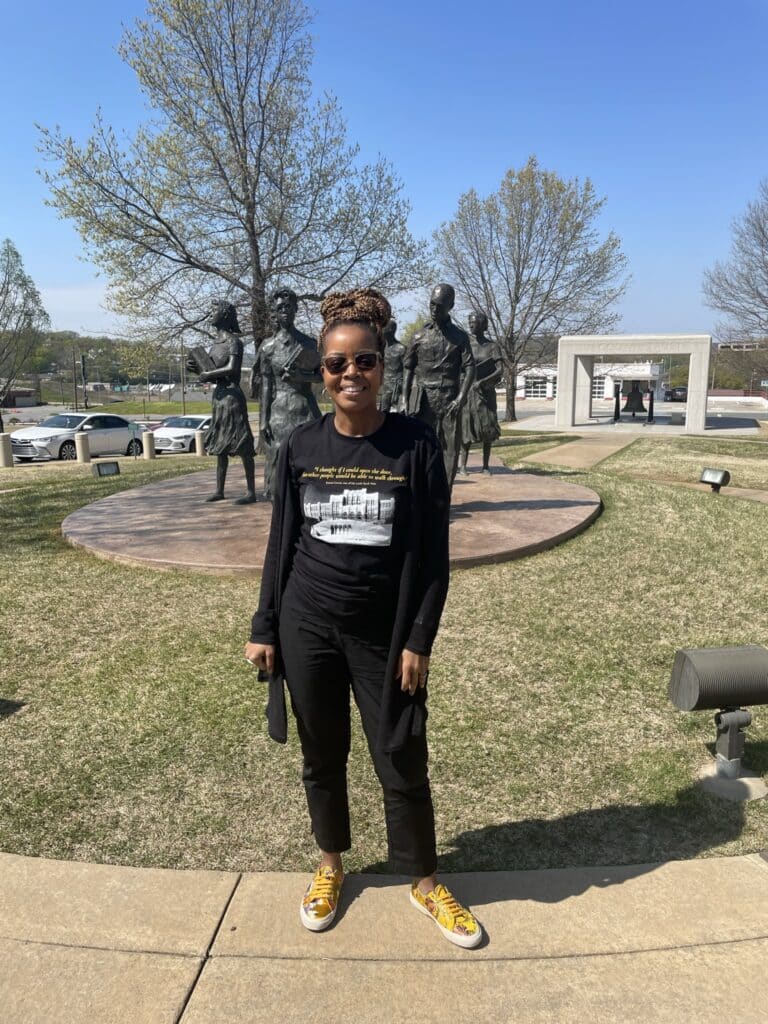
There was an additional layer of opportunity for high school students who took part in the program as they received leadership training and served as mentors for the middle school students. Both high school and middle school students took the course side-by-side to learn history and create their own narratives. All of the high school students who participated attend University of Chicago Charter School in Woodlawn. The next phase of their project is to create a mosaic that will be at the school and serve as a reminder of their experience.
When it came time to visit Little Rock, the students had a full day of activities, visiting Little Rock Central High, the Arkansas Capitol building, as well as various memorials. Central High is now a National Historic Site and students were able to visit a memorial park, the historic Mobil/Magnolia gas station, and the visitor center. On their trip, students watched a documentary about the Little Rock Nine and also got a chance to see memorabilia and purchase souvenirs. The trip included a visit to the Arkansas Capitol Building, which features a statue of every member of the Little Rock Nine, as well as quotes from them.
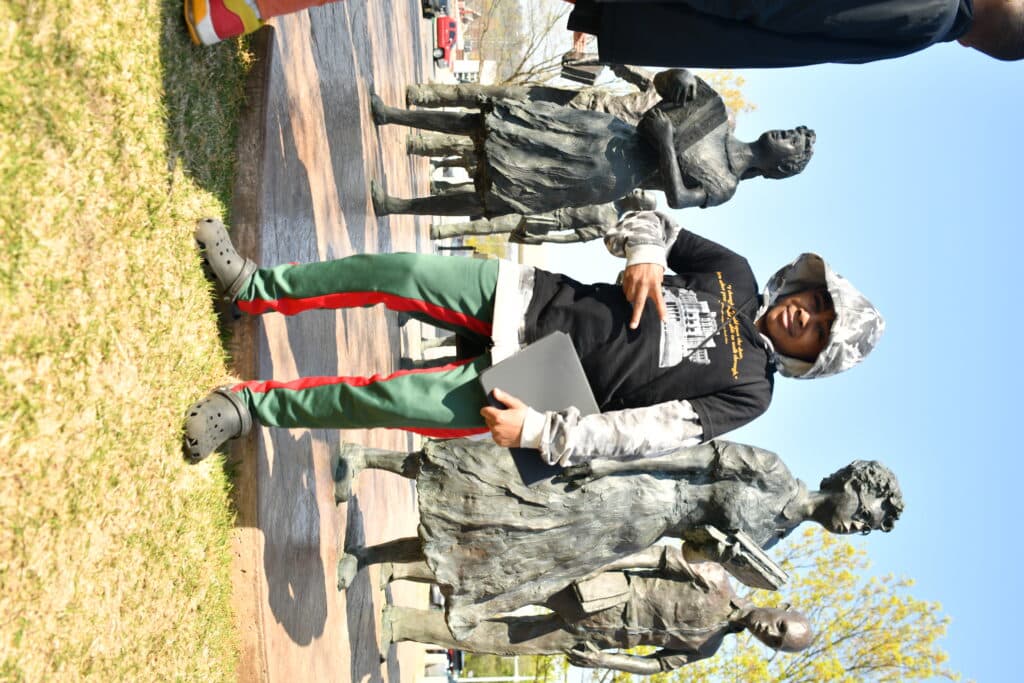
The visit to Central High revealed the resources offered by the school's campus and how the diversity of the school has advanced since the integration of the Little Rock Nine. They met with two assistant principals from Central High who provided updates on the current status of the school. The assistant principals emphasized the diversity of Central High, which now accommodates students internationally who speak over 30 languages. Today, young people all over the world attend Central High, since it is a large school with the resources to support a diverse student body.
As students visited Central High and other historical sites related to the Little Rock Nine, they reflected on their own experiences and the current opportunities they have to address social injustice. Cosette emphasizes that the trip was intended to have the students ask, “What are the Little Rock Nine situations in my life? What have my parents and grandparents had to do? And when have I had to stand up to injustice?”
Visiting Little Rock will hopefully inspire ongoing leadership within the students. By focusing on the Little Rock Nine, who were kids between the ages of 14-16 when they transferred schools, the curriculum focuses on young peoples’ capacity to be change makers.
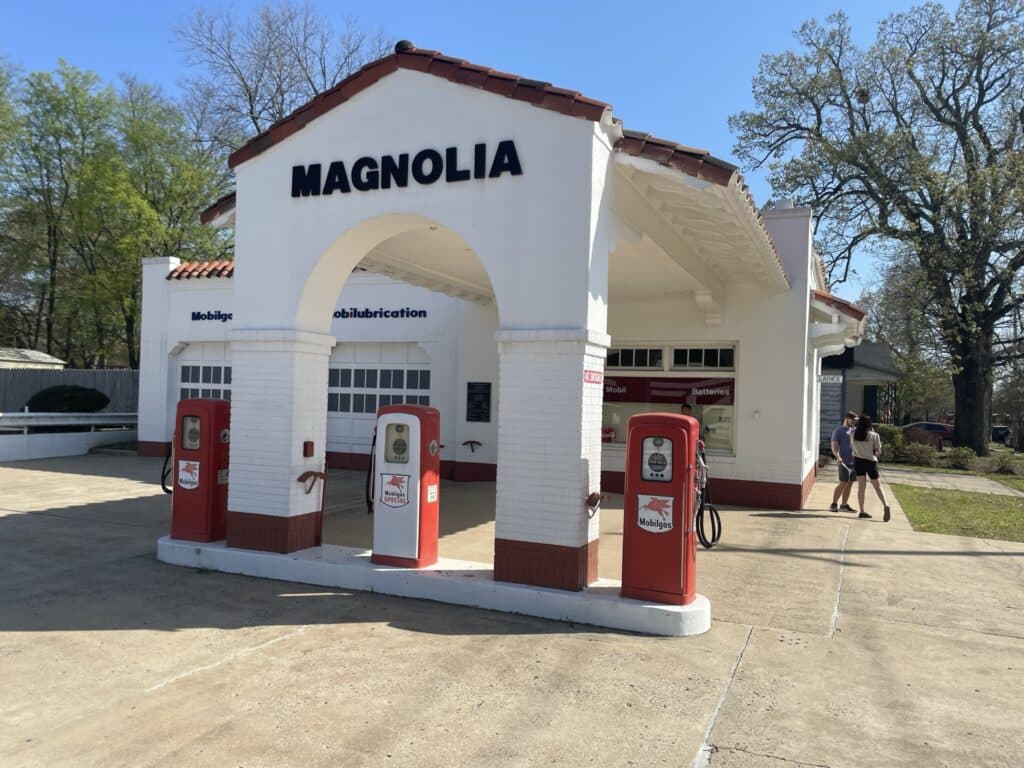
Opportunities for reflection were extended to the families of students. One of the adult chaperone’s is the grandmother of one of the children in the program. She stood on the street in front of Central High and provided testimony of what happened when the Little Rock Nine were escorted into the school by the National Guard. She noted how the neighborhood around Central High used to be an entirely white neighborhood and has now become a Black neighborhood. She also talked about how the Little Rock Nine saw Central High School as an opportunity for educational advancement. Central is a large high school close in size to a college campus, which was a stark contrast to the much smaller all-Black Horace Mann High School that was built during the same period.
Following their visit to Little Rock, the students’ experience of the trip will be used to tell their own stories. They used their iPads to create narratives about their trip. A documentarian accompanied them and will work with the students to combine their narratives and footage to create a documentary. Through connecting with history and actively applying it to their lived experiences, the students will see the importance of telling their own stories and engaging with their community.
Camp Duncan Brings Social Engagement and Smiles to Chicago’s Youth
The girl in this picture is Malia Causey, a nine-year-old from the Austin community in Chicago who lost her brother, Malik, to gun violence in 2016.

Her life has not been the same since the loss of Malik, who was 14 at the time of his death.
For Malia and other kids in similar situations, social activities and meaningful engagements with their peers are warmly welcomed.
"Ms. Davis, can we please ask the Goldin Institute and Talk2mefoundation to bring me back? This was really fun.''
Those are the words that Malia says to Nicole "Coco" Davis, 2021 Chicago Peace Fellow and CEO/President of Talk2mefoundation, who recently took young Chicagoans on a trip in the great outdoors at Camp Duncan.

"I like it here; no one will ever get shot or killed." Malia says further.
Malia's wishes lie in the heart of Talk2mefoundation. This non-profit organization supports kids whose parents and caregivers are incarcerated and need healing and peace through belonging to a community.
Speaking briefly to Goldin Institute about the importance of this youth camp, Nicole emphasizes the need for such support in the first place.
"They say money cannot buy you happiness, but the Goldin Institute brought 25 smiles for youths at Camp Duncan." -- Coco Davis
Thanks to the generous support of her peers in the Chicago Peace Fellows Mutual Aid Collaborative, she made it possible for these young people to socialize, learn, exercise, and dance together.
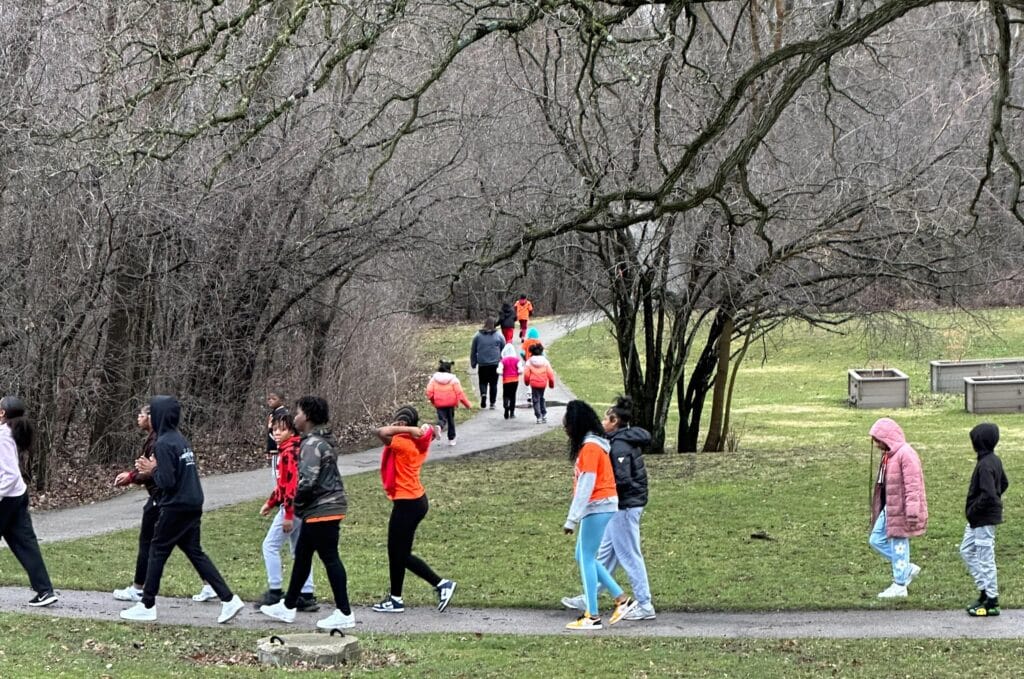
"Shout out to the Goldin Institute and the Mutual Aid Collaborative for making it possible for me to grant the wishes of 25 youths by giving them a chance to experience life outside of their normal living."
“I have so many sponsors to thank it's unreal" she wrote in this Instagram description, where you can also see the smiley faces of participants after a dancing challenge.
When becoming a Chicago Peace Fellow, Coco highlighted wanting to be part of the solution. She joined the Chicago Peace Fellows program to become a vital contributor to bringing healing and peace to communities in Chicago.
As one can see, Coco is an active voice and advocate for social justice; she keeps ties with with the Mutual Aid Collaborative made up of 74 Alumni of the Chicago Peace Fellows program as a valuable part of her community-driven approach to needed change. But the work continues beyond there.
Talk2mefoundation still needs support to continue its vital work in the community. Coco passionately advocates decriminalization and knows it takes a community to make a difference. That is why she's calling on everyone who believes in second chances and fundamental human rights to support her organization's work.
Every little bit counts, whether through a donation, volunteering, or simply spreading the word.
The connection between Goldin Institute and its fellows goes beyond the length of the program. When Fellows graduate from the Fellows Program they become part of the Mutual Aid Collaborative and the Global Alumni network that connects Chicago leaders like Coco with peers from over 40 countries across the globe.
Follow us to stay tuned for more opportunities:
Teaching the Importance of Pluralism and Social Inclusion through Robotics
By: Zeki Salah, Communications Associate
A global grassroots robotics initiative, One Team Two Continents, brought thirteen South African students to Chicago in March to participate in a FIRST robotics competition. The project was a joint collaboration between 2019 Chicago Peace Fellow Jackie Moore and 2018 Global Fellow Dieudonne Anumbosi Allo. Funding from the Chicago Peace Fellows Mutual Aid Collaborative and the U.S. Embassy in South Africa enabled the team to provide cultural programming and transportation for the South African students as well as their Chicago robotics team mates.
The Mutual Aid Collaborative consists of 74 Black and Brown leaders and committed allies who live and work in the communities they serve on the South and West sides. They have raised over $100,000 to support several active projects. As an expression of solidarity and support, The Funders Pledge, a project of the Mutual Aid Collaborative, decided to share their funding with the One Team Two Continents team to help cover the local costs of hosting the students.

Both Jackie and Dieudonne have experience working with youth in STEM education, making them strong collaborative partners. Dieudonne is the CEO of the Global Leading Light Initiative, a non-profit in South Africa which supports young people in historically disadvantaged communities to acquire future proof skills, with the aim of reducing poverty and inequalities. Jackie is the founder and Executive Director of Agape Werks, Inc, a community based non-profit in Chicago with a mission to promote in young people an appreciation of math, science, technology, and engineering as strategic tools for success regardless of life circumstances.
The partnership between the students in Chicago and Port Alfred dates back to 2019, when Allo and Moore developed the “One Team Two Continents” concept after meeting through the Goldin Global Fellows program to explore cross-continental collaboration opportunities. This initiative envisions a youth-led, distributed team working together on robotics projects in an environment that fosters inclusion and cultural pluralism. The students from both continents convened under the banner of the Chicago Knights, a community based, borderless, and inclusive all-city FIRST Robotics team.

Prior to collaborating with Dieudonne, Jackie had been invited a few times to teach robotics in Uganda and South Africa. These opportunities did not meet her philosophy of teaching, which is to “not to become the expert in the room, but to work collaboratively with someone.”
Soon after Jackie and Dieudonne met, the pandemic hit and remote learning opportunities allowed for the students from South Africa to be involved in collaborative robotics programs. They collaborated remotely for an entire season of robotics competitions. Remote work did have its challenges, Jackie explains, “the way that I typically work really requires a lot of hand-on teaching.” While the virtual environment made it difficult for students to focus, especially in Port Alfred where they often faced the challenge of unstable internet connections and recurring “load shedding”, the students held on and kept coming back for robotics opportunities.
Things changed for the One Team Two Continents team when a grant from the U.S. Embassy's U.S. Mission to South Africa provided funding for students to travel between Chicago and Port Alfred. When applying for the grant, Jackie and Diedonne focused strongly on the fact that the kids from South Africa and Chicago would be working together as one team. Their project proposed to demonstrate the value of pluralism and social inclusion in a robotics environment. This allowed for the teens’ interest in robotics to be placed front and center while showing the value of pluralism and social inclusion through working together as a team.
The exchange between the students in Chicago and the students in Port Alfred went both ways, with the Chicago students having an opportunity to visit South Africa in October of 2022. Together the teammates built small robots and did exercises to develop capacity for working cohesively as a team.
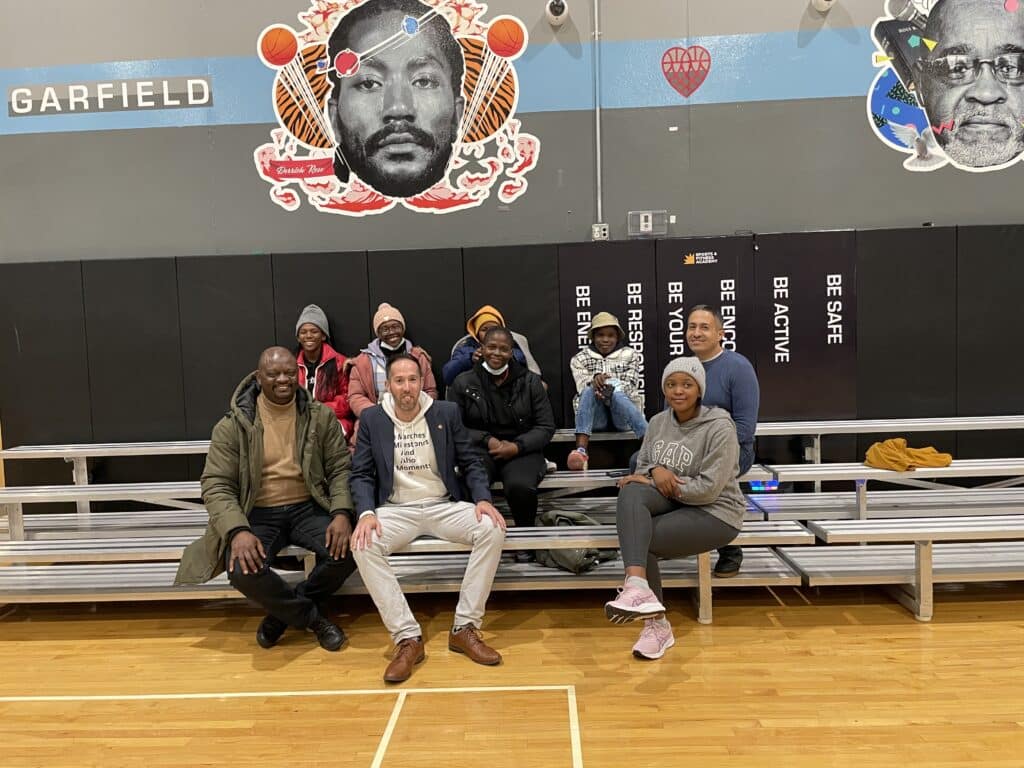
In one meaningful team building exercise, students were able to explore principles and practices of successful collaboration through a soccer game where the rules were altered to reflect the FIRST ecosystem’s values of “coopertition” and “gracious professionalism.” “Coopertition” is the practice of competing cooperatively in which a person will help their competition because the better they both are, the more they can do. In the same vein of competitive compassion,“gracious professionalism” is the idea of competing to the best of one’s ability, but to do it with grace and kindness. These two values harmonize well with Jackie and Dieudonne’s goals of pluralism and social inclusion because they encourage each member of the team to assess one another compassionately so that they can cooperate and work to each members’ strengths.
When the South African teens visited, they were taken on cultural tours of Chicago. These tours included all members of the team and many Chicago members visited places they had never visited. Students went to Little Village, Chinatown, and Robert Lindblom Math & Science Academy in West Englewood. Many of the South African students were surprised to see English as a secondary language in these neighborhoods, with the majority of signs being in Spanish in Little Village or Chinese in Chinatown. This encounter was particularly shocking to the adult South African on the trip who experienced apartheid, when assimilation to a dominant culture was expected. To see distinct Hispanic and Chinese cultural identities existing within a diverse society, and being celebrated by the community as a whole, was a new perspective and an example of the successes of cultural pluralism.

The teens who made up the Chicago Knights were incredibly dedicated to their team’s success, not only traveling internationally to learn robotics, but also sacrificing time from school and extracurriculars. The Chicago students missed Thursday and Friday for the competition, and a week of school to travel to South Africa in October. Hannah was a Chicago student who was new to the team this year. She was not able to travel to South Africa, but she worked consistently before and after the South African team arrived. For the competition, she took a break from her extracurricular activity of playing squash, missing a tournament to meet for robotics. This dedication to robotics helped the team members form close bonds and collaborate with one another and appreciate the diversity of the team.
The rules and guidelines for the FIRST Robotics competition came out in January, giving the team little time to build their robot in preparation. The 2022-2023 season of FIRST competitions was themed FIRST ENERGIZE, with activities encouraging the FIRST community to think about future energy sustainability. This challenge was inspired by the United Nations’ 7th Sustainable Development Goal, which is to ensure access to affordable, reliable, sustainable, and modern energy for all. The team built a mobile robot that was designed to play a custom game designed by FIRST. The robot uses a six-wheeled tank drive and is controlled remotely by a micro-controller called a roboRIO. It has an arm with a manipulator at the end which is composed of rollers that allow it to pick up and launch objects. The students built the entirety of the robot: interpreting drawings, measuring, cutting, drilling, and wiring electronics.
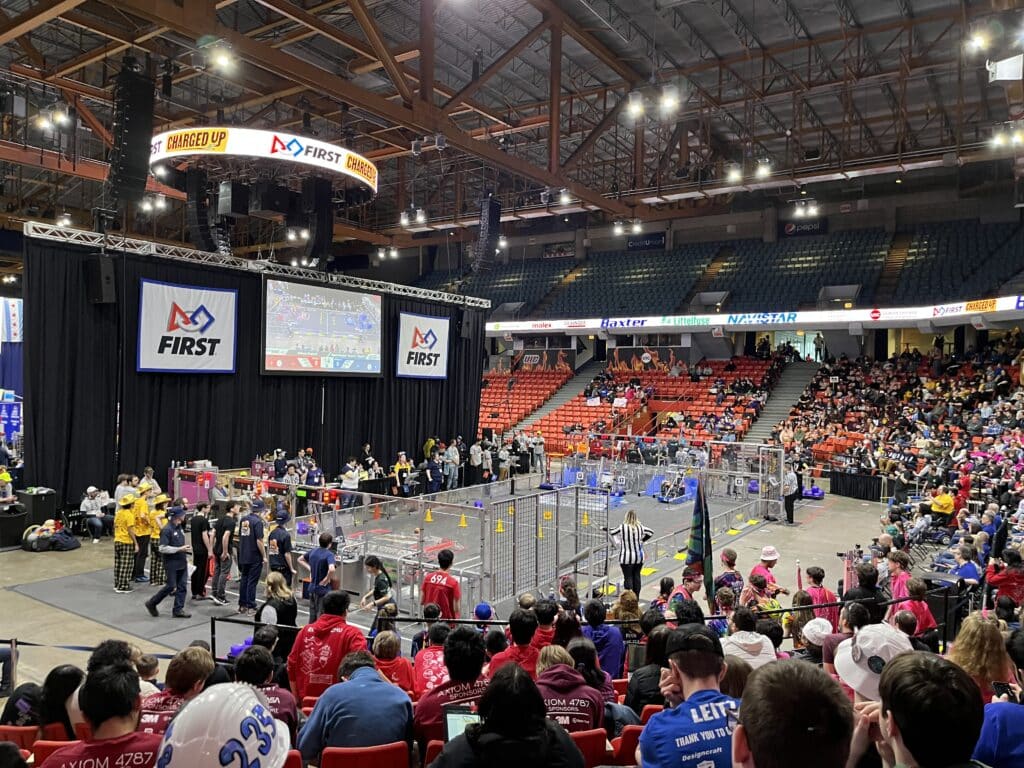
On the field were safety cones and inflatable spheres which needed to be gathered by the robots and moved to appropriate environments. Extra points could be achieved through creating links of particular objects within specific locations or by balancing the robot on an elevated platform with its teammates. Jackie and the Knights understood the game from a social perspective, referring to the manipulated objects as “cone people” and "square people” who could thrive by being placed together in diverse environments as a community which produces points as resources.
The team made an “Every-bot” design shared by the FIRST community which was designed to be accessible and constructible with basic tools. By focusing on the build, the team had a chance to get a lot of hands-on experience building by constructing the entirety of the robot in Chicago. The Chicago side of the team built an initial section of the robot, but when the South African students arrived they got to be a big part of finalizing the robot. Students learned skills and information on the sport to accomplish last-minute aspects of the build in the midst of the competition. One South African student named Litha came in without a great deal of hands-on experience but became a key member of the team working on electronics. She learned from mentors on the Knights and on other teams competing to gain the necessary skills to work on the electronics of the robot. Chicago students also stepped in to teach the South Africans what they had learned from prior builds. Reflecting on the process, Jackie noted, “I guess adversity builds strong bonds. We knew we had a deadline to meet, a very finite time to work on it, and they all worked together.”
Due to the timing of the South Africans arrivals and logistical challenges on the Chicago side, much of the building of the robot took place during the start of the competition. This came at the cost of missing the first day of competing, but provided bonding experiences and a lot of opportunities for the South African team members to gain the hand on building experience that they had been lacking. One student named Jalen, reflected on the building process: “We worked really hard. We would work from 9am-8pm because we had to build a whole robot in a week. We had to work quickly, make as few mistakes as we could, and stay focused.” Despite the rushed building process, the teens were very excited to participate in the competition and all came together to cheer when their robot made it to the competition floor.
As the teens on the Chicago Knights competed in the FIRST competition, they realized that cooperation was an essential part of the tournament. Many Chicago students went out of their way to teach South African students, who had limited experience building. For instance, Jalen was referred to as the “rivet master” for teaching the rest of the students how to use a rivet gun. Not only did teammates assist each other, but they were also helped by other teams. As the Knights crunched to build their robot, they were assisted by students from Lindblom to machine a ventilation pipe. Reflecting on her favorite memories working on the project, one student named Hannah reflected, “Cheering for our team at the competition was my favorite part. But we also got to go around and take pictures with other teams [...] I was shy to speak to other teams, but they were really nice and let me take pictures with them and their robots.” From start to finish, the FIRST competition was as much about compassion and collaboration as it was about competition, making it an excellent environment for cultural and intellectual exchange.
Spark Center: A New Community Resource Center for South Side Chicago
The community of South Side Chicago will soon have a new center serving them: Spark Center, thanks to the tireless contribution of Jennifer Maddox, Executive Director of Future Ties and 2020 Chicago Peace Fellow. Spark Center will hopefully open in 2024, at 6330 S. King Drive, and provide much-needed opportunities for residents in West Woodlawn, including social services and other engagement activities.
Jennifer says the Spark Center name itself will hopefully spark others to see that people need resources, accessibility to programming, and community engagement "in an area that was really one of the worst blocks of the city of Chicago."
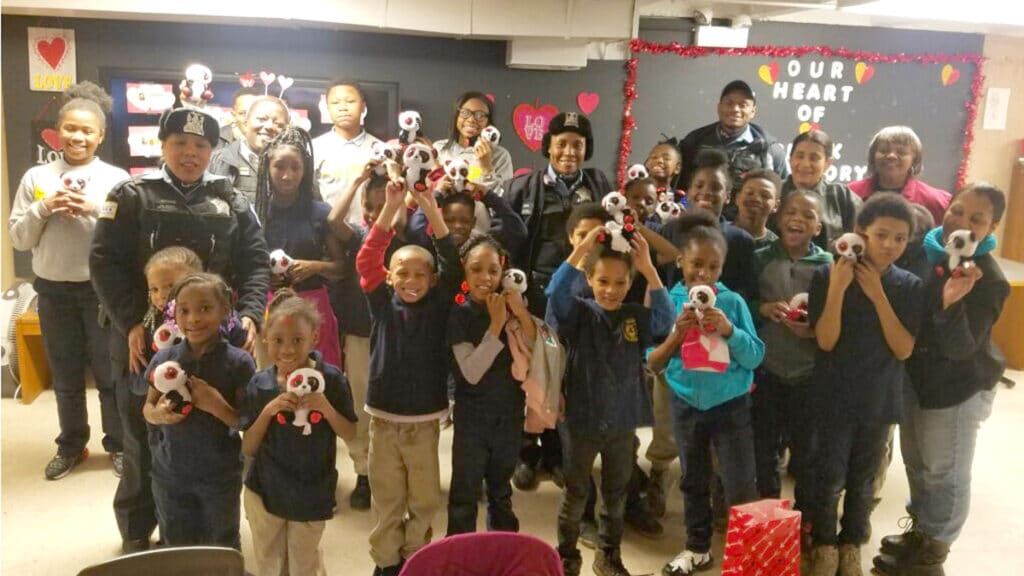
This is why Jennifer decided to establish the center, to attend to the community's vital needs and strengthen ties among young people and families in the area. The Spark Center will offer a range of programs, such as after-school clubs, workshops, assistance for parents, and a year-long program to build young people's capacity to engage in employment opportunities.
Broadening the Positive Impact on Community
The community has benefited from the work of Future Ties throughout the years, and things are only going to get better whereby they will touch even more lives with this center.
“In 2021, we got a donation from BODi to purchase a Walgreens building. Purchasing this building means we can expand our programming which is currently being offered in a basement, which means we are limited in what we can provide. Our new space will allow us to triple our programming. In the basement, we have to be very selective because we don't have a lot of space." --- Jennifer Maddox
Now, with more space and opportunities, she explains how the narrative can be rewritten for good.
"We want to change the narrative about the community because what we see happening over there is a lot of trauma, crime, disorder, and chaos. We want to alter that to show that families within communities are trying to be successful. Still, they need help and support."
Although they are still in the zoning process, she gives us a sneak peek of what families and youth can expect from a day spent in Spark Center.
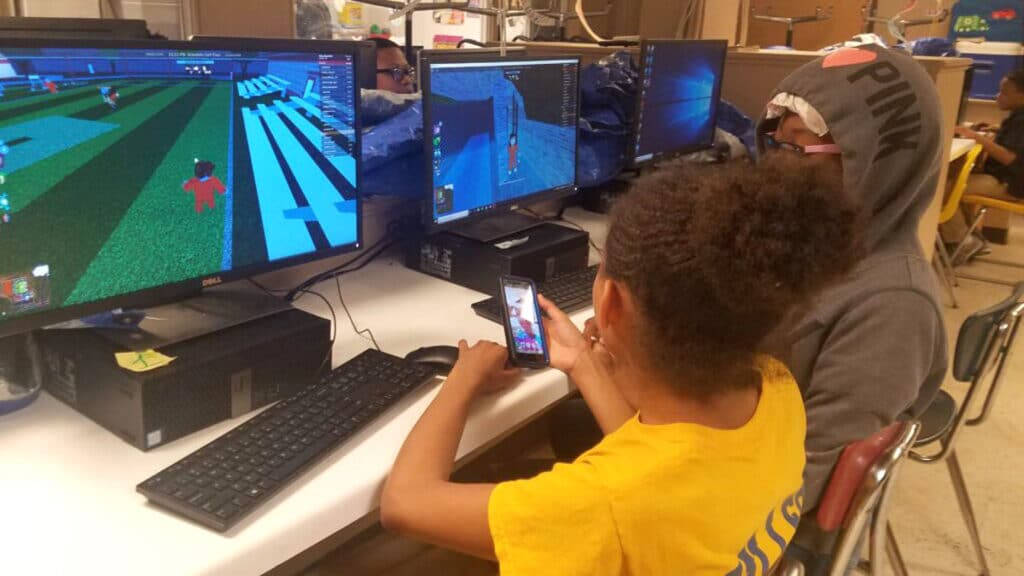
"Some of the programs that we offer are after-school programs. Typically, the neighborhood schools offer after-school programming, but they have over 700 students, so their capacities are limited. We get referrals from the schools and then do our community outreach to provide an after-school program. We offer an evening meal when they come in; they get a snack, they get help with their homework, if they have any issues with reading or something, we talk to their parents and see how we can help them."
Young people will also have a year-long program through which they can benefit.
"Here, we are building young people's capacities for employment opportunities. We provide training for resume building, interview skills, elevator teaching, and some soft skills they need to be job ready."
Speaking about the versatility of this center, Jennifer also elaborated on their plans to open a commercial kitchen.
"Once we build up the kitchen, it will also allow small businesses and entrepreneurs to use our space to get their brand out to people. It gets the community more engaged in what we are doing and contributes to building healthy eating habits among people."
A Community-Based Space
Jennifer believes such community-based initiatives are crucial for the well-being of that community. She elaborated further on the engagement process of the community:
“We had community meetings, and community members had the chance to ask questions about the program, about the design. They also spoke about what they wanted to see in this space. We considered all that and worked with our architect to see if things are in the way the community was saying."
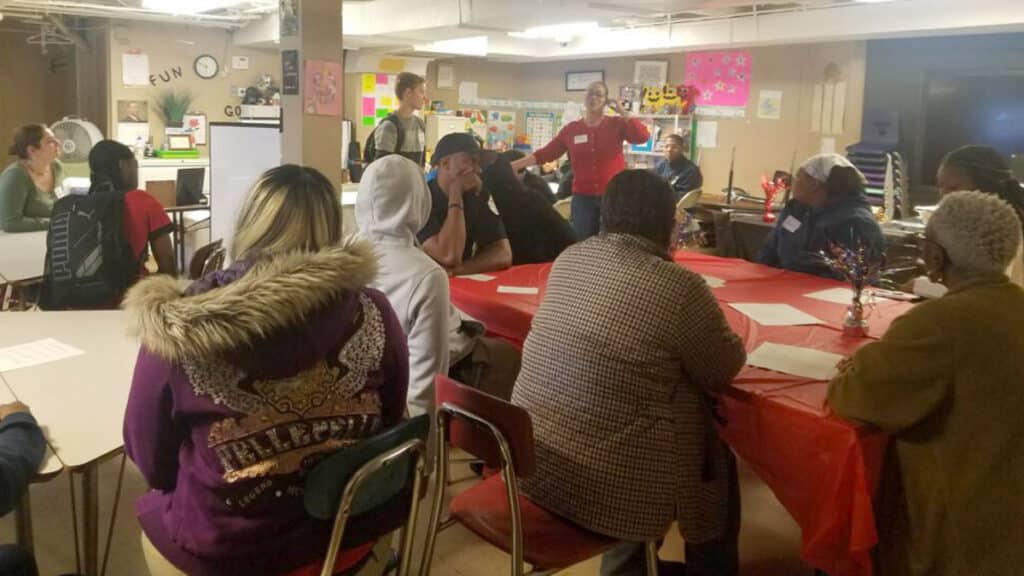
She adds that this space is for the community, and they are the ones utilizing it. She recalls that as a non-profit, they want people to see Spark Center as a place they can turn to which acknowledges them and meets their needs. For this, she understands that input from the community is vital in genuinely including and adjusting to its needs.
“We do not want a building that sits empty. We want people here. By this, we know that people in the building are using our services. We constantly wired the community. We have a flyer where people can scan a code, fill it out as a survey, and let us know what they think is working and what is not. They can also give us ideas on how they can be more engaged. We are always open to hearing new ideas.”
Building On Her Experience as a Chicago Peace Fellow
During our conversation, she touched on the importance of authentic community engagement:
"In the near future, I aim to have more parents included. We have a parent mentor program, where we work with parents and build their capacities to get them to see their best. Sometimes parents live through their children […].”
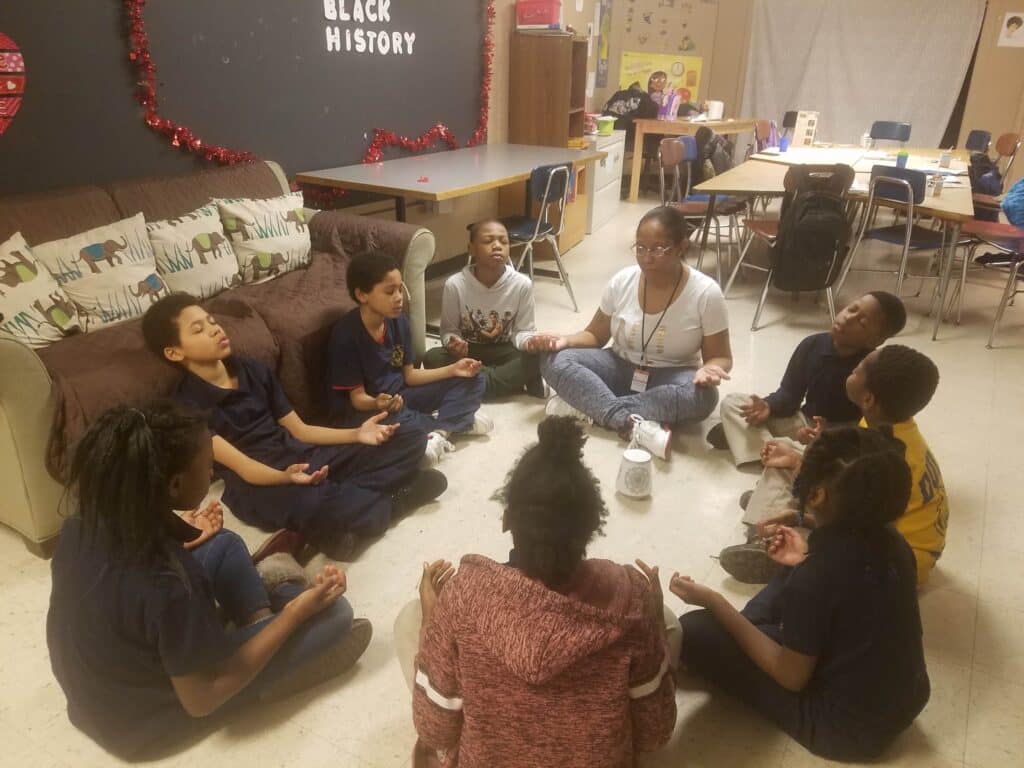
Speaking to parents, she adds "you are never too old to learn anything. We are supporting parents with their passions and things they wanted to do when they were younger."
Jennifer further explains that Spark Center has partnerships to help parents to get their high school diplomas, skills to be ready for a job, and driver’s licenses. And sometimes they also hire the parents and want them to be involved in the organization.
“Those simple things that people do not really think about are big to some of our parents, who never had someone to support them to get the things they wanted for themselves.”
When speaking about grassroots work, we could not leave aside her participation in the Chicago Peace Fellows Program in 2020.
“It was an honor to be a Peace Fellow because it made me feel I was not here alone. It made me feel that there are people across the city that were just as passionate and just as committed."
She adds that she loved listening to the other fellows' challenges and successes.
“They were so supportive of each other. It can make one have more connections; you have a whole cohort of Peace Fellows that you can call and say, ‘Do you know someone who does this or that?’ We want to know more about the work that others are doing. This is because to have peace and connectivity, we need to cooperate and spread the knowledge we have.”
Jennifer continues to implement her knowledge by dedicating herself to serving the community. As we wrapped up our interview, Jennifer shared that she is "just a woman trying to make a change in the community, coming from one service job, being a Chicago police officer for over 25 years, and now still maintaining a relationship with the community because that's the most important element to building trust."
She states the community needs change-agents that are credible and whom people trust and value.
***
If you would like to support the Spark Center’s cause, visit their website to volunteer, donate, or host your workshop.
You can also follow their work on social media:
A Reflection on Black History through Handwriting: An Interview with Dr. Dorothy Thompson
2021 Chicago Peace Fellow, Dr. Dorothy Towns-Thompson and her daughter, Antonette Parker, a teacher, recently co-authored three books on Black history and handwriting for children of all ages. Dr. Thompson has over three decades of experience as an educator, alcohol, and drug prevention professional, administrator, and ordained minister and has used the skills she acquired community activist and teacher to author these books.
The books cover arts, social studies, and social-emotional learning. They also include a motivational word for each letter of the alphabet, a definition or explanation of the word, and historical locations and personalities. The author also focuses on the importance of inter-generational connections and the need for communication within families and schools.
A unique aspect of these books is their spotlight on cursive writing and handwriting as a way of inscribing and honoring Black history. Dr. Thompson stresses that the books are not only a step further in bridging the educational gap in our society, but also inform future action-oriented strides.
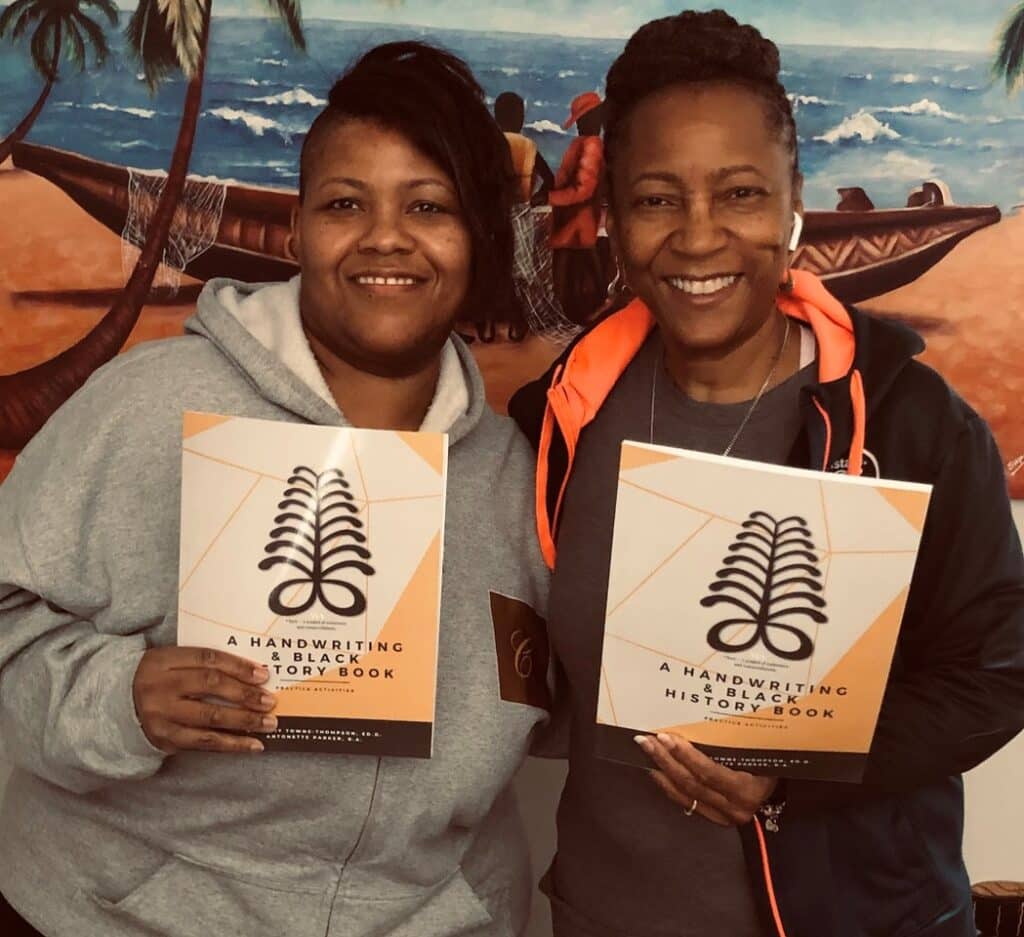
Flipping the Pages
The facts, photos, and biographies encourage youth to do more research on Black history once they read the books. Volumes 1, 2, and 3 of the books, released in February in connection with Black History Month, are for children of all ages, focusing on the experiences of Black people. "One reason I thought to write this is that I did not want just to have a book dealing with history or writing. My daughter and I also added inspirational messages. The book is divided into three volumes: primary, intermediate, and upper,” she elaborates. Each book cover has a distinctive color influenced by the Ghanaian Flag.
"The first Book is for primary students (Grades Pr. K - 2) and has a golden cover. It begins with “A stands for Africa,” with pictures on that page. It continues, “Africa is a continent, and America is a country.” We know that some children often cannot read books in the primary grades. Still, adults can read to them, drawing that emotional connection between the youth and adults." She adds, “The African diaspora spans from sea to sea and connect. And, through the books, people can see the connection. "There is also a sense of unity in this," Dr. Thompson added.
Book two is for intermediate students (Grades 3 - 5), and its color is green. It has the exact format followed by the book one, but the handwriting practice is in cursive. "To me, there's a need to be able to use the pen and paper where students are learning cursive writing because many young people don't know how to write in cursive. They have difficulty reading cursive." She shares that cursive writing is helpful to learn because it not only helps younger people decipher others’ handwriting, but also it is usually helps them to write a little faster.
The third book is burnt orange, representing the red of the Ghanaian flag. Dr. Thompson explains that "This book serves students in upper grades or higher (6 and up), and each letter of the alphabet includes two noteworthy historical figures." She further talks about how they chose specific people from the Black community while considering the goal of increasing connectedness and celebrating accomplishments: "You have famous Black people that people heard about like Dr. Martin Luther King, or Jennifer Hudson and George Foreman. But we also have people who were in art, or who were scientists. We have Eleanor Samuel, a scientist, and physicist. Or, the mathematician, Walter Mosley. " Dr. Thompson explains that they wanted young people to see Black people who are historians, politicians, performers, and athletes too. "It varies. We picked different people who have contributed to the history of Black people." The inter-generational connections are vital to her; she says adding they want to keep it going.
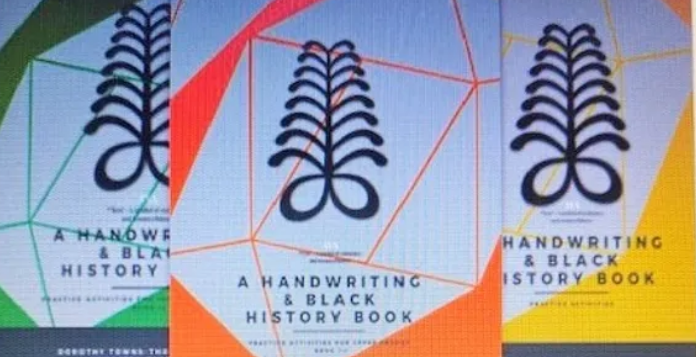
A Better Understanding of Black History
Dr. Thompson and her daughter also reflected on the relationship of their books with Black history overall when writing them. “A lot of times, young people, sometimes even people in general, do not see the connection between the relationship of Africans and African Americans. [...]. Because of the history and slavery, and how we represent people from different parts of the world and continents."
Dr. Thompson designed her books to highlight the need for people to see the rich history and how Africans and people from the African diaspora contributed not only to America but to various places worldwide. "Many times, young people and other people just see the negatives of Black people. That is why I say the book is not just for Black children, our children, or people in general. It's just to show that contributions have been made and continue to be made by Black people." She believes that having opportunities for communication within families or even in schools is so important. "I do not see my book only being used in schools. I see my book also part of family relationships." she adds.
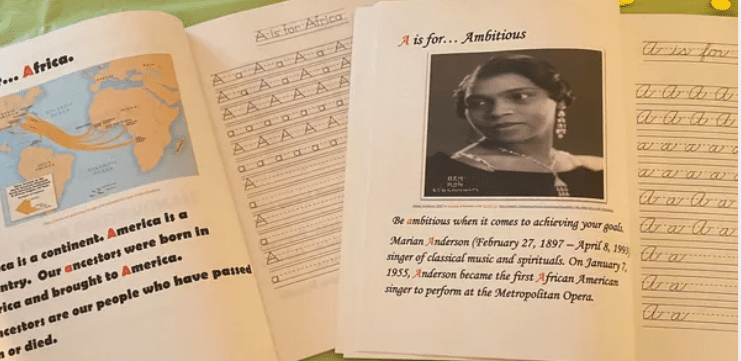
The Meaningful Mother-Daughter Cooperation
Dr. Thompson and her daughter Antonette adopted a division of labor concept as they collaborated on the book. "We selected different portions of what part of the book we wanted to manage. And then we came together to see what worked, what we should include, and how it should be shaped." She emphasized her daughter’s work as a primary school teacher aided in their ability to communicate and collaborate as they both have experience working as educators. Further, she adds that this will not be their last cooperation. "Since we are focusing on anti-bullying, that's one of the things that we are looking at creating a book for. We were ironing out some ideas. It would be another collaborative work."
Check out their website for book signings and more on A Handwriting and Black History Book.
Meet the 2023 Chicago Peace Fellows
by Travis Rejman, Executive Director
The Goldin Institute invites you to learn about each of our 2023 Chicago Peace Fellows representing 14 community areas across the city. Founded in 2019 in collaboration with the Partnership for Safe and Peaceful Communities, the Chicago Peace Fellows program is the only leadership development program that is built by and for grassroots community leaders on the South and West sides of Chicago.

ABOUT GATHER
Peace Fellows participate in GATHER, an online asset-based community engagement course, as well as in-person training, collaborative action projects, and networking experiences with civic leaders, academic researchers, and policy makers. The Chicago Peace Fellows reduce violence by building relationships, engaging youth, collaborative peace building projects over the summer and by creating new networks among residents, families, schools, and nonprofit organizations.
The Fellows are learning together through GATHER, which is both a mobile platform for shared learning and a curriculum for people who want to build on the talents of their neighbors and the assets of their communities to make real and lasting change. Gather Fellows learn and work together through an innovative curriculum that comes pre-loaded on a tablet device with all the connectivity, materials, videos, practices and tools necessary to provide a mobile classroom and toolkit for community leadership.
The Chicago Peace Fellows project connects and equips cohorts of past grantees of the Chicago Fund for Safe and Peaceful Communities to reduce violence and promote peace. The 2023 Chicago Peace Fellows is the fifth all-Chicago cohort to utilize the GATHER platform, an online learning hub built by the Goldin Institute to empower grassroots leaders.
The Chicago Peace Fellows will engage in a 22-week course of intensive shared learning as well as group projects, culminating in a graduation event in September 2022. The curriculum has been designed in collaboration with the grantees themselves, based on their practical knowledge and hard earned wisdom, with input from a wide range of civic leaders. Fellows will reflect on their past summer work, identify successes and lessons learned, and improve their abilities by sharing strengths and learning new skills.
The Goldin Institute and the Partnership for Safe and Peaceful Communities have aligned missions that value authentic community leadership. The Chicago Fund is uniquely effective at finding motivated problem-solvers and community-builders. By connecting Chicago leaders through GATHER, their efforts to nurture safer and more peaceful communities will be more effective, interconnected and lasting.
OUR PARTNERS
A special thanks to the Chicago Community Trust, the Conant Family Foundation, Crown Family Philanthropies, the Frankel Family Foundation, the MacArthur Foundation, the Polk Bros. Foundation, the Racial Justice Pooled Fund, the Seabury Family Foundation, and the Partnership for Safe and Peaceful Communities for making this program possible.
To follow along the learning journey with the Chicago Peace Fellows, please sign up for our newsletter and follow up on Twitter, Facebook and Instagram.
Black Star Project Showcases Careers in Sports at the NBA All-Star Weekend
By: Zeki Salah, Communications Associate
The Black Star Project recently partnered with BDM Sports & Education Project to send Chicago students to Salt Lake City to learn about careers in sports at the NBA All-Star Weekend from February 17-19. This trip marked the third year that the Black Star Project has sent young people to the NBA All-Star Weekend to provide them with an inside look at the professional world of basketball and with a fun weekend of basketball events.
Brian McCoy, or Coach Q, began the BDM Sports & Education Project in 2014 with the goal of making a positive difference on the South Side after repeatedly hearing about violence on the news. “What I know is that a young person can’t shoot a gun and a ball at the same time. So I went to one of the roughest spots in Chicago and said, ‘Hey, I want to do a free sports camp for young kids’ [...] I think the kids I spoke to felt my sincerity because I gave them a clipboard and when I returned later the clipboard was filled on both sides.” Coach Q then went to his contacts in community activism and education, including Gloria Smith, a 2020 Chicago Peace Fellow, and approached them about starting a youth sports camp, with a focus on the business side of sports. He held his first camp in Englewood in 2014 and has continued to hold basketball camps, baseball camps, and most recently an introduction to golf.
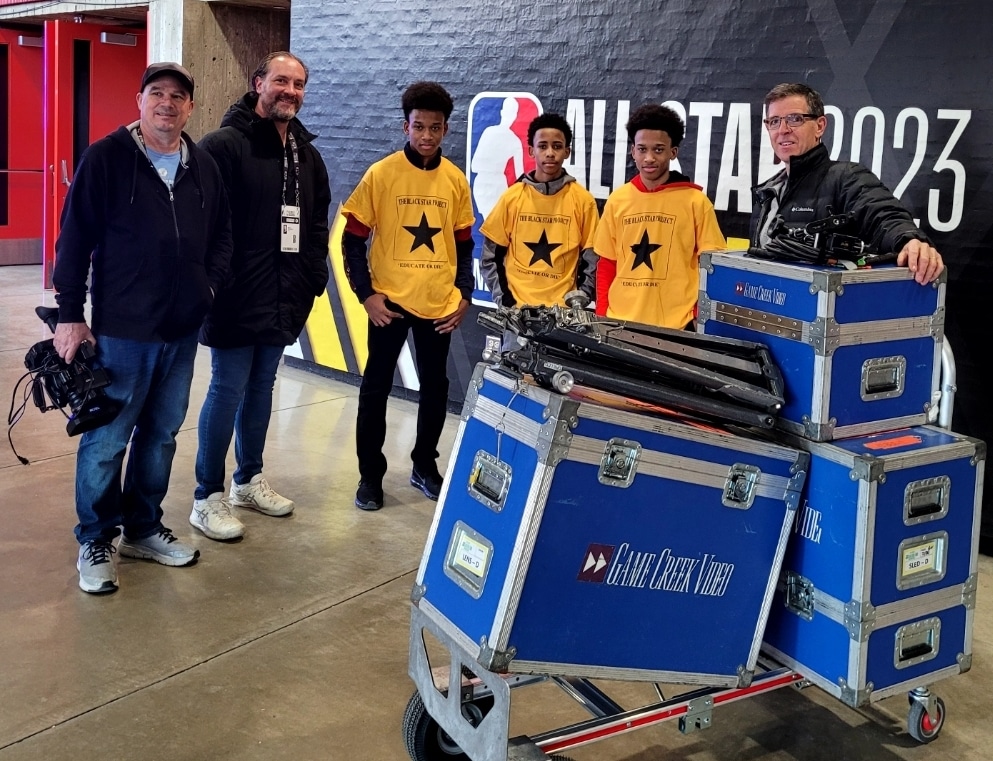
The trips to NBA All-Star Weekends have been held by Coach Q and the Black Star Project for the last three years. The trips aim to combine an introduction to the business of sports with a fun weekend for teens on the South Side. The trips place a focus on academics and include essay contests before and after the trip. In prior years, the Black Star project has chosen participants for the trips based on essays that they write on their interest in a career in sports. This year, an essay contest is being held for a cash prize following the trip. Coach Q and the Black Star Project also provide a ten week business of sports curriculum leading up to the trip, which allows the young people to learn about the different professions within the sports industry before they go on to meet them at events such as the All-Star Weekend. Speaking to the idea of synthesizing the business aspect and sports aspect of the trip, Coach Q said:
The average young person wants to be the next Lebron James, but in actuality, the probability is really slim [...] So, what I try to do is let them know that it’s okay to have dreams, but let them know the reality of the situation and ask: ‘What are you really looking for?’. By taking them to the game you can show them both sides, the excitement, but also the thousands of people making that game happen. There’s a camera man, a sports physician, a sports attorney, an agent, a sports statistician, a kinesiologist; there’s so many different careers involved that no one ever talks about.
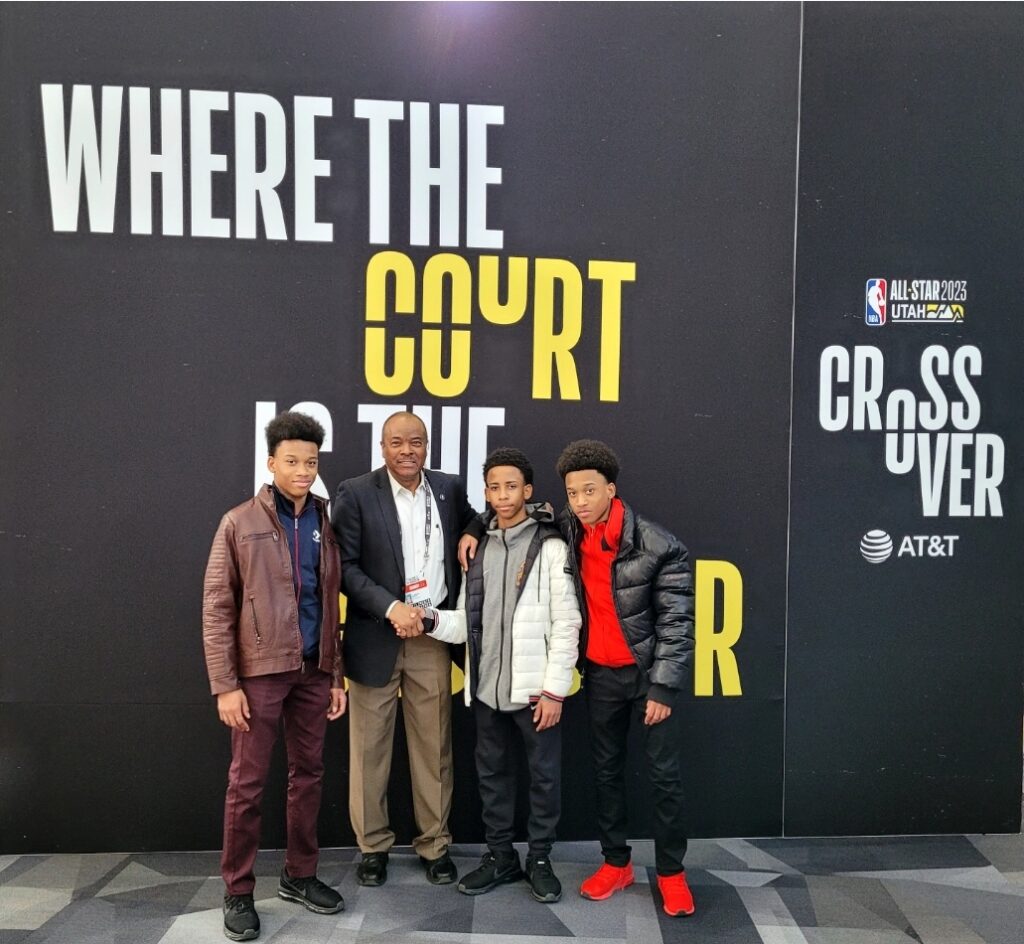
The Black Star Project took the lead on programming and fundraising for the All-Star weekend, while Coach Q accompanied the young people and introduced them to professionals in the sports business. The first event they attended was the HBCU Classic, an annual basketball game between two Historically Black Colleges and Universities (HBCUs) that was started by the NBA to show their commitment towards social justice in response to boycotts during the Black Lives Matter movement. The young people on the trip also participated in an HBCU college fair and learned about the NBA’s HBCU Fellowship program, which aims to provide career development opportunities in the business of basketball for undergraduate and graduate students from HBCUs. After the fair, the young people were also able to meet and greet with sports business professionals.
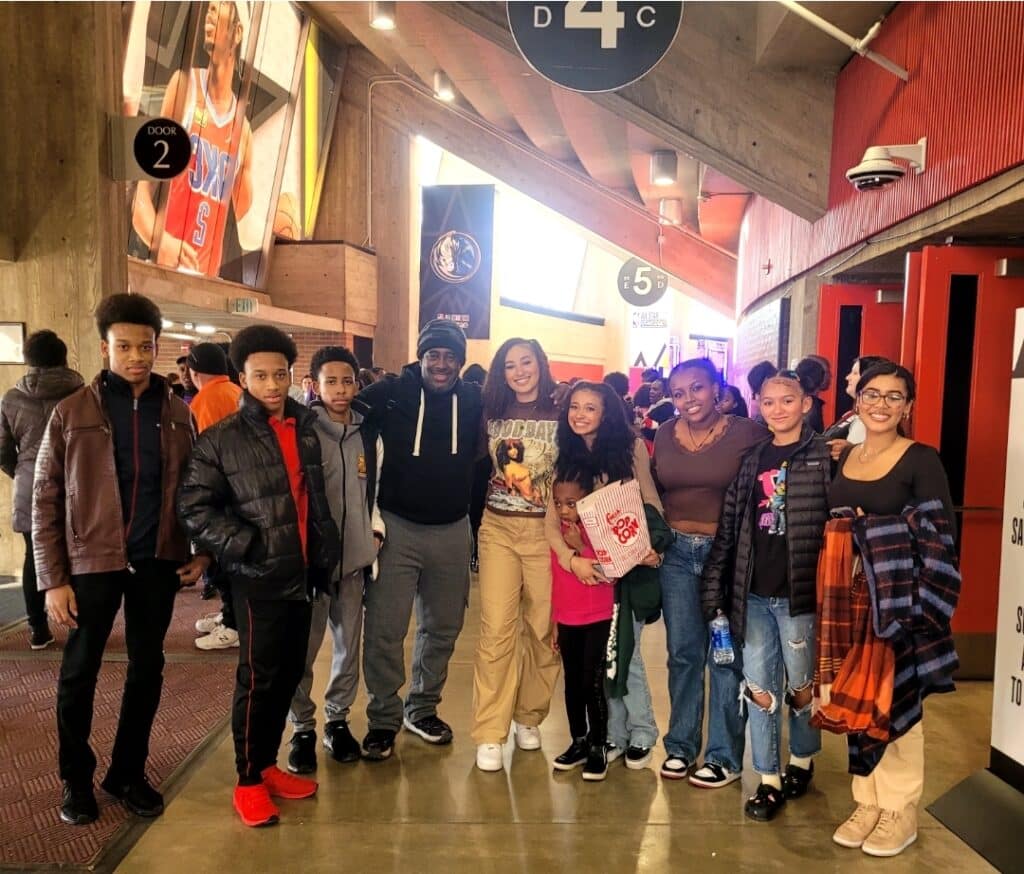
Throughout the weekend, programming combined both opportunities for the young people to have fun and enjoy basketball programming and an inside look into potential careers. The young people on the trip were able to have dinner with Rev. Jesse Jackson, who attended the University of Illinois on a football scholarship. He provided insight as to how entering the business of sports could allow an individual to transition to other careers, such as career as a minister and civil right leader. There was also a more leisurely section of the trip where the young people attended the NBA Crossover, which is a multi-day interactive fan event that brings basketball culture to the forefront, featuring player appearances, live performances, art, and music. Combining both business and pleasure helped the young people think about their futures in a fun and energetic setting and provided them with a one of a kind opportunity.
Coach Q and the Black Star project aim to continue to hold trips to NBA All-Star Weekends for young adults on the South Side. They hope to not only hold trips to the NBA All-Star games, but also to the WNBA All-Star games so that young women can get involved as well. The next WNBA All-Star game will be held in Las Vegas in July. You can support the Black Star Project and their efforts to send students to these games to learn about the business of sports here.
BDM Sports & Education Project's (Powered by the Black Star Project) 4th Annual Youth Business of Sports Essay Contest
Following the trip to Salt Lake City, BDM Sports and Education Project held an essay contest for high school students with the following prompt: "The average NBA playing career is about 5 years, how should players maximize their opportunities for personal growth and professional development, during their time playing in the league, while also preparing for when their NBA playing career comes to an end... Life Beyond the ball?"
Winners of the contest include:
1st Place Winner ($1,000): Brandon Williams-Orr, Providence St Mel HS
2nd Place Winner ($500): Aaron Williams-Orr, Providence St Mel HS
3rd Place Winners (Tied) ($250): Laylah Richmond, Bolingbrook HS and Antonio Scott, Little Black Pearl HS
LOV Day 2023 Instills Purpose, Passion, and Perseverance
By: Zeki Salah, Communications Associate
On Saturday, February 11th, 400 self-care boxes were distributed to 400 girls across the neighborhoods of Bronzeville, Englewood, North Lawndale, and Austin areas. The boxes were distributed by Ladies of Virtue as part of their 3rd annual celebration of LOV Day. LOV Day was sponsored by the Chicago Peace Fellows Mutual Aid Collaborative as a partnership between 2019 Chicago Peace Fellows, Jamila Trimuel, Executive Director of Ladies of Virtue, and Dawn Hodges, Executive Director of Imani Community Development Corporation. Ladies of Virtue is a Chicago-based non-profit founded by Jamila in 2011 with the goal of becoming the premier mentoring and leadership training organization for Black girls in the world. LOV Day was established in 2021 to further their mission “to instill purpose, passion, and perseverance in girls, ages 9 to 18, while preparing them for college, careers and to become change agents in their communities."
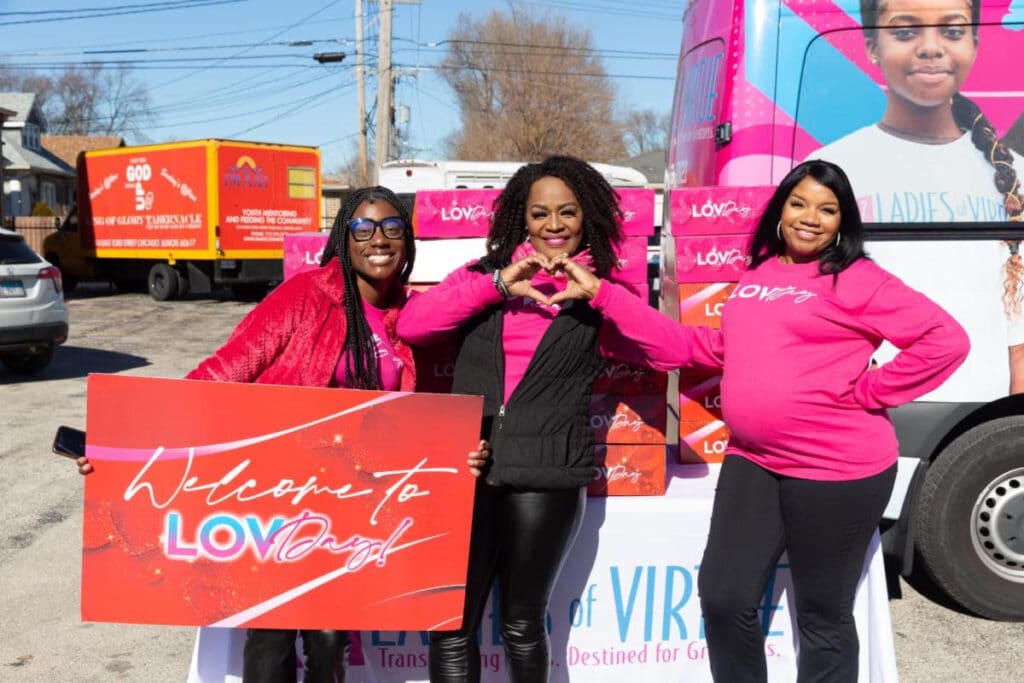
Ladies of Virtue is a mentoring and leadership program for girls, ages 9 to 18. Over the last 11 years they have served over 2,000 girls and families. LOV matches their participants with mentors and prepares them for leadership through our culturally relevant character building, career readiness and civic engagement curriculum. The team at Ladies of Virtue provides project management, collaboration and communication training via their two to four-month project experiences to empower girls to lead in the modern workforce. After graduating from high school, with successful completion of LOV’s leadership program, participants are mentored and supported for six additional years, from 18 to 24, as LOV 4 Life alumni.
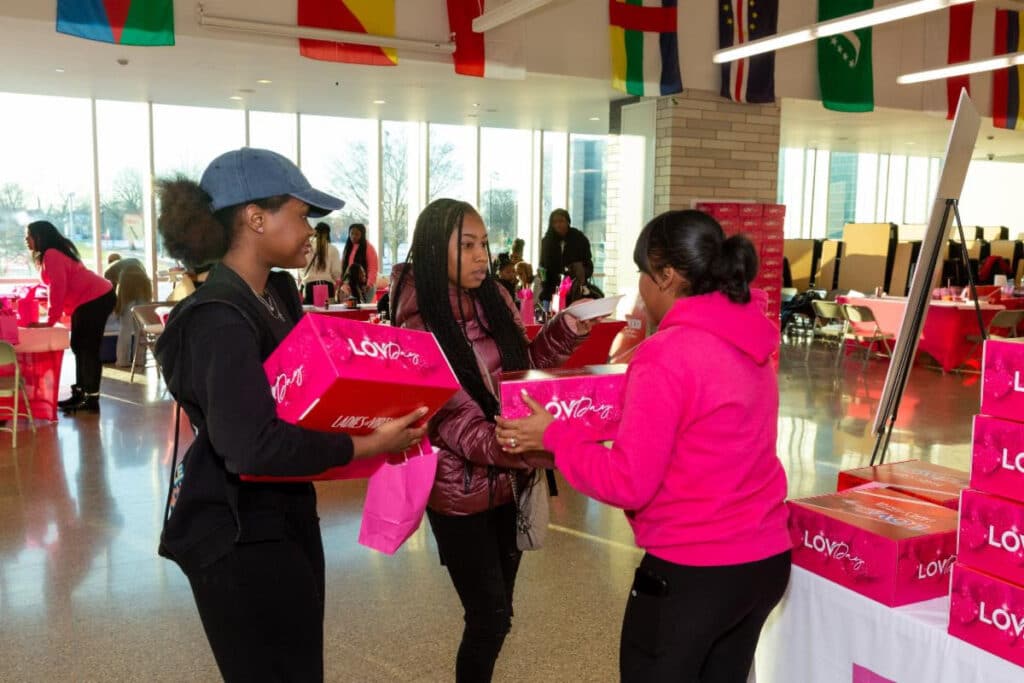
LOV Day was a community effort, obtaining funding from the Peace Fellows Mutual Aid Collaborative, drawing in fifty-five volunteers from 12 Corporate/Community Partners, and hosting events in six different schools and community centers. Jamila brought the proposal to fund LOV Day to the Mutual Aid Collaborative alongside 2019 Peace Fellow, Dawn Hodges.
The Mutual Aid Collaborative consists of 74 Black and Brown leaders and committed allies who live and work in the communities they serve on the South and West sides. They have raised over $100,000 to support several active projects. The Mutual Aid Collaborative met and collaboratively voted in January to provide LOV Day with funding to support the distribution of LOV Boxes filled with self-care items. Each LOV box included a teddy bear, chocolates and candy, a painting kit, hair care products, and Black history facts.
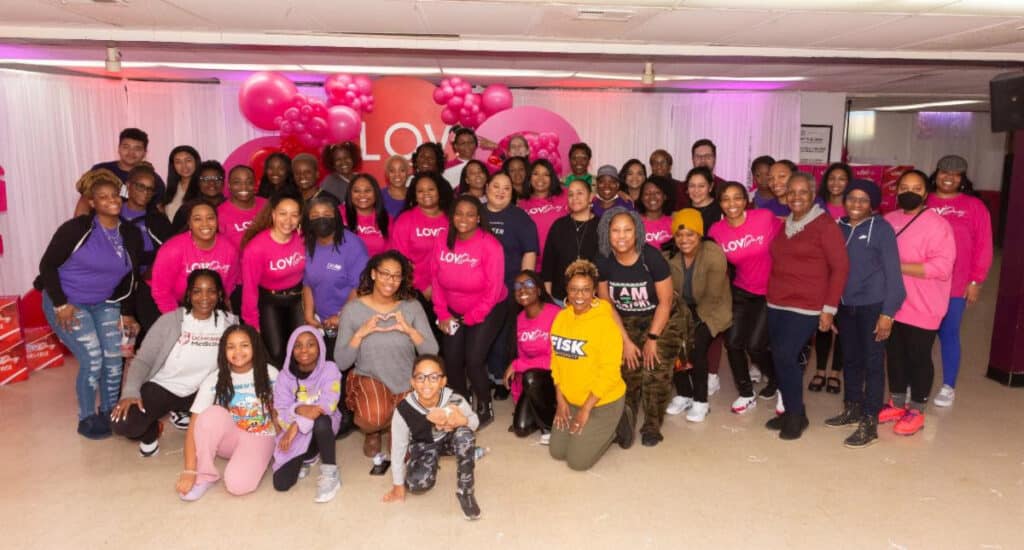
LOV Day served as a way to celebrate both Black History Month and Valentine's Day. Themes of Black history and culture were interwoven with the idea of providing girls with the space and opportunity to rest and care for themselves. LOV Day featured a self-care experience called “Black Girls Rest”. This event served 100 girls, twice as many as the previous year. Black Girls Rest included workshops on how to maintain healthy hair, skin care, and feminine care. Hair care stylists, cosmetologists, aestheticians, and an OBGYN all attended to provide guidance. Speaking to the themes of Black history and rest, one Lady of Virtue stated, ”All throughout Black history, slavery and during the Great Migration, Black people were constantly on the move and still to this day heavily dipped in GRIND culture. We need to STOP and REST.”
While 2022’s LOV Day centered more around the distribution of boxes, this year’s LOV Day focused heavily on programming, with Ladies of Virtue visiting six schools to hold self esteem and confidence workshops. Events include hair and makeup demonstrations, pillow decorating, mental health workshops, feminine and skin care tips, and candle making. The programs were conducted by program facilitators for the Ladies of Virtue and aimed to show Black Girls that they are and should be loved, nurtured, and protected. For instance, one workshop had girls identify what they love about themselves and encouraged their peers to support that expression of self-love.

Jamila attended one of the LOV Day classes where girls were discussing when they were at their best. One girl that Jamila was working with said “Oh I love my smell because it reminds me of how my dad smells,” but then noted “ I really don’t talk about my dad much.” When Jamila asked why, the girl mentioned that he died a few weeks ago. Jamila reflected, “that really let me know that she felt like this was a safe space for her to express herself; that we were establishing a safe space for girls to just be themselves.”
To continue their mission of instilling purpose, passion, and perseverance in girls, ages 9 to 18, while preparing them for college, careers and to become change agents in their communities, Ladies of Virtues is always looking for volunteers. Volunteers serve as role models for their girls, parents, and the community. You can find volunteering opportunities for LOV at: https://www.lovchicago.org/volunteer
Generation Now 2.0: A Mutual Aid Collaborative Talk Show for Teens Produced by Teens
By: Michael Henderson, Director, Mutual Aid Collaborative
Generation NOW was conceived by Messiah Equiano, a 2021 Chicago Peace Fellow, and aims to provide opportunities for young people to work on a teen talk show that addresses everyday issues that teenagers face. The program pays teenagers to produce, direct, and act in the show and provides them with a safe environment to express their thoughts.
In August of 2022 Generation NOW filmed its first talk show that addressed “Dating and Violence”. Messiah Equiano, Executive Director of CHI-Rise, and Nicole Davis, Executive Director of the Talk to Me Foundation, saw first hand how therapeutic and empowering this platform was for teens. They deemed the first filming of Generation NOW as a success and proposed a second talk show to the Chicago Peace Fellows Mutual Aid Collaborative.
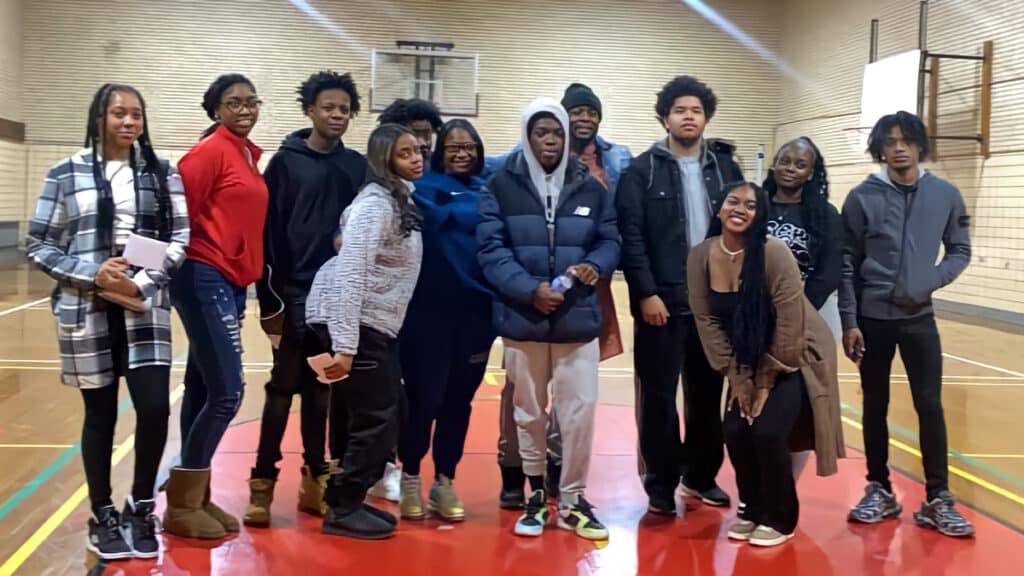
The Mutual Aid Collaborative consists of 74 Black and Brown leaders and committed allies who live and work in the communities they serve on the South and West sides. They have raised over $100,000 to support several active projects. The Mutual Aid Collaborative met and collaboratively voted to provide Generation NOW with the funding to film a second talk show at the Foster Park District.
Messiah and Nicole wanted to expand the dating conversation in the second filming and talk to teenagers about love. Nicole thought “Keeping with February as the month of Love and with so many young men and women at the ages of 12 and 13 dating, Generation NOW wanted to know what love looks like to them”. On Saturday, February 4, 2023 Generation NOW filmed a talk show focusing on young peoples’ understanding of love entitled “The Love Recording”.
Continuing the vision of the first talk show. Generation NOW provided young people with a safe setting to be open about their opinions, while also providing them with experience with different aspects of television production. Teens work on the project as writers, production members, or actors and were compensated for their work. Funds provided by the Mutual Aid Collaborative were used to pay ten teenagers $250 each for their involvement in a day of filming.
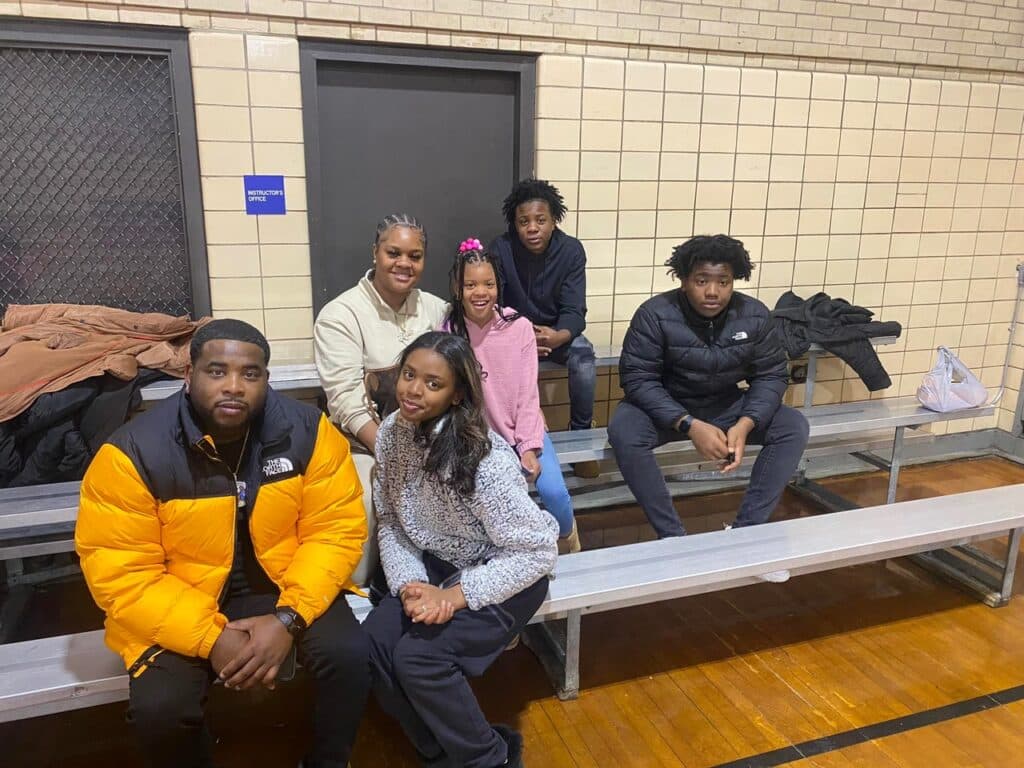
Messiah and Nicole agreed that teens are not always given the space to feel safe in the city of Chicago or in their homes and “it's ok to open up” and be vulnerable. The intimate and safe filming provided teens with a platform to voice their beliefs without judgment, but also with a chance to enact their visions in a production and to work together collaboratively. Each participating teen/young adult performed their expression of love through forms such as poems, monologues, and skits. Following the performances, discussions were held to explore the themes and messages of the show. The transparency and vulnerability of the answers according to the 25 plus attendees had the crowd “up in smoke”.
For one scenario performed at the “Love Recording,” young men and women were given flowers and candy to reenact how they will ask a person out for a date. The attendees were amazed at the vulnerability in the response and stories from the teens. The majority of the girls suggested that it's the responsibility of the guys to ask the girls out for a date, while some of the boys agreed that if a girl is asked out and has a boyfriend the girl should let the guy know. Another vulnerable teen shared his experience and story of being assaulted by a girlfriend. These stories allowed the teens to have open conversations about dating and the different kinds of expectations and responsibilities they feel in romantic life. The second filming was as successful as the first with both teens and parents participating with excitement.

Generation NOW aims to provide teens with opportunities to express themselves. Messiah believes it's important to let teenagers know “they value their voices, they value their experiences, they value their input and their involvement in their communities”. CHI-Rise and the Talk to Me Foundation “want to give back” to their community and teens. They are looking to produce episodes of Generation NOW monthly. They are also looking towards expanding the programs to different communities, and looking specifically at communities with higher risks of violence and to get more parents involved.
Chicago’s First Annual Sukkah Design Fest Brings Together Social Justice and Design
By Zeki Salah, Facilitator, Mutual Aid Collaborative
The first annual Sukkah Design Festival was held on October 9-16, showcasing North Lawndale’s Jewish history and providing social services to the community. Reshorna Fitzpatrick, 2019 Chicago Peace Fellow and Executive Pastor of the Stone Temple Baptist Church, was a member of the organizing committee, which included community-based organizations and design firms. These groups brought the community together to explore the history of North Lawndale through collaborative design projects and built relationships centered around social justice.
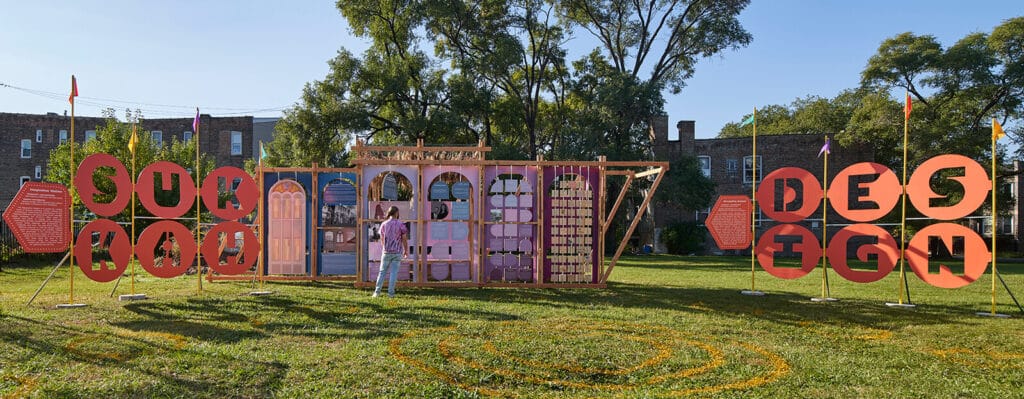
Pastor Reshorna became involved with the Sukkah Design project through her work with the Lawndale Pop-up Spot, a museum housed in a shipping container created by Chelsea Ridley, Jonathan Kelley, and members of the North Lawndale neighborhood. They built the Lawndale Pop-up Spot on a lot owned by Stone Temple Baptist Church, now called the Love Blooms Here Plaza. The Lawndale Pop-Up Spot explores the history of North Lawndale through rotating community-designed exhibits. Given the history between Pastor Reshorna and the Lawndale Pop-up Spot, she gave an enthusiastic yes when Jonathan and Kelly proposed the Sukkah Design Festival. They held the festival from October 9th to October 16th on the Love Blooms Here Plaza, across the street from Stone Temple Baptist Church. The main attraction for the event was a series of Sukkahs which aimed to promote social justice and explore cultural legacy through design.
The Sukkah Design fest created three Sukkahs, temporary outdoor structures, to celebrate the Jewish holiday, Sukkot. Sukkot celebrates the end of harvest time and involves the creation of Sukkahs where community members can gather, eat, and spend time with one another. The festival split participants into three teams. Each team included a Chicago-based design firm and a community-based organization that collaborated to design a Sukkah with a social justice element.
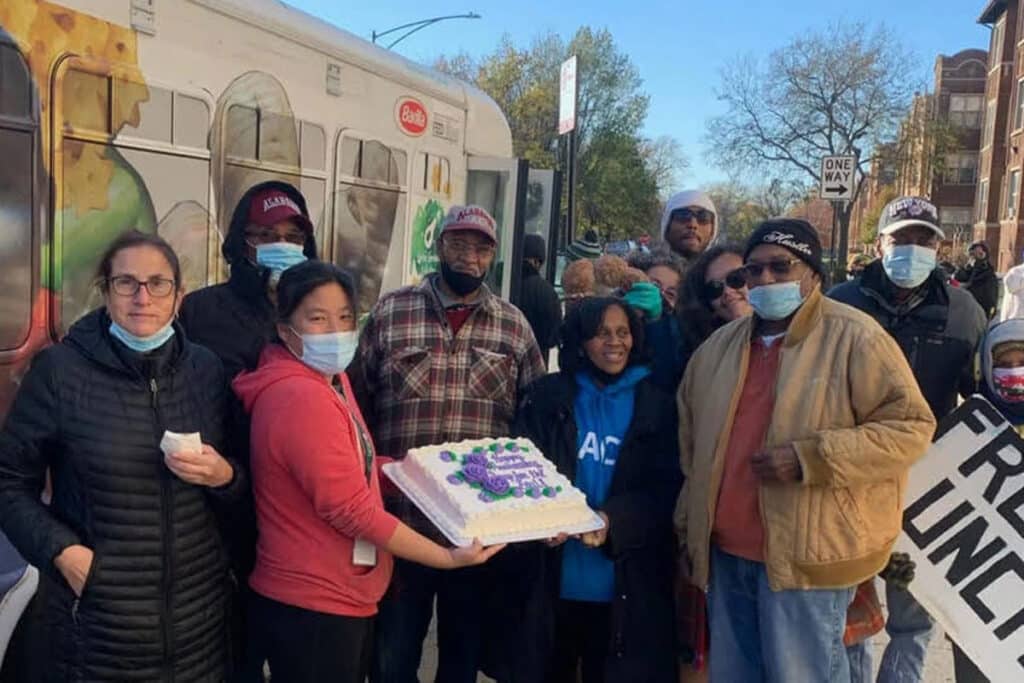
The Young Men's Educational Network (YMEN) partnered with the firm Human Scale to put together a “Giving Sukkah,” where people could receive food and flowers grown by the community. Community-grown food and flowers are a staple of the Love Blooms Here plaza, which has also housed community gardens designed by Pastor Reshorna and another 2020 Chicago Peace Fellow, Annamaria Leon. The Giving Sukkah has now moved to YMEN’s headquarters on Pulaski Boulevard.
Stone Temple Baptist Church worked with the firm New Office to design a micro-museum that explores the history of Stone Temple from 1926 to the present day. The exhibit examines the various stages the building went through as both a synagogue and a church. Current community members were also involved in its design as the team explored what residents love about North Lawndale. Through interviews and community input, the team brought the present neighborhood into conversation with its history.
Men Making a Difference and Open Books – North Lawndale Reads partnered with the Chicago Design Office and Made In Englewood. Together they created an inter-generational “book nook,” which acted as a free library. This Sukkah also served as a space where people of all ages could come together to read or play games. Collectively, all three Sukkahs tackled the issue of food accessibility, explored community assets, and built relationships between people in North Lawndale. Each Sukkah functioned as a hub for discussions, music, and food before they relocated to more permanent sites.
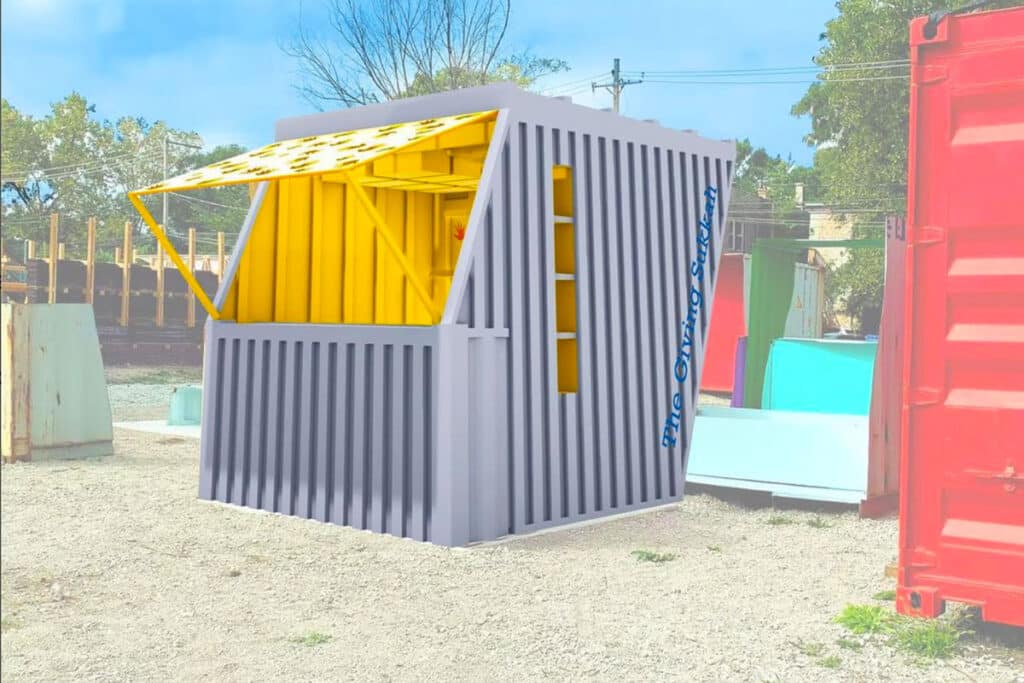
Programming at the Sukkah Design Festival brought members of the North Lawndale community together through meals and conversations about their neighborhood. Food was often a central element of the celebration: Stone Temple held their weekly “Soup for the Soul” food drive within the festival grounds, and various faith-based organizations partnered to organize interfaith dinners throughout the week. Pastor Reshorna noted that “nothing brings people together more than food,” a sentiment that inspired a community clean-up event in which participants celebrated their work picking up trash with a free meal and conversation about environmental justice.
As people gathered around food, festival organizers worked to draw their attention toward the built environment surrounding them. Community organizations gave tours of various Peace Parks in North Lawndale which aim to reactivate vacant lots. The architects and designers of the Sukkahs also held guided tours during Open House Chicago, a city-wide architectural festival. The Sukkah Design Fest inspired conversations about how the built environment can impact issues such as segregation and resource shortages. By gathering the community around food and leading discussions about their neighborhood, the Festival aimed to build new partnerships between designers, faith leaders, and community activists to address these problems.
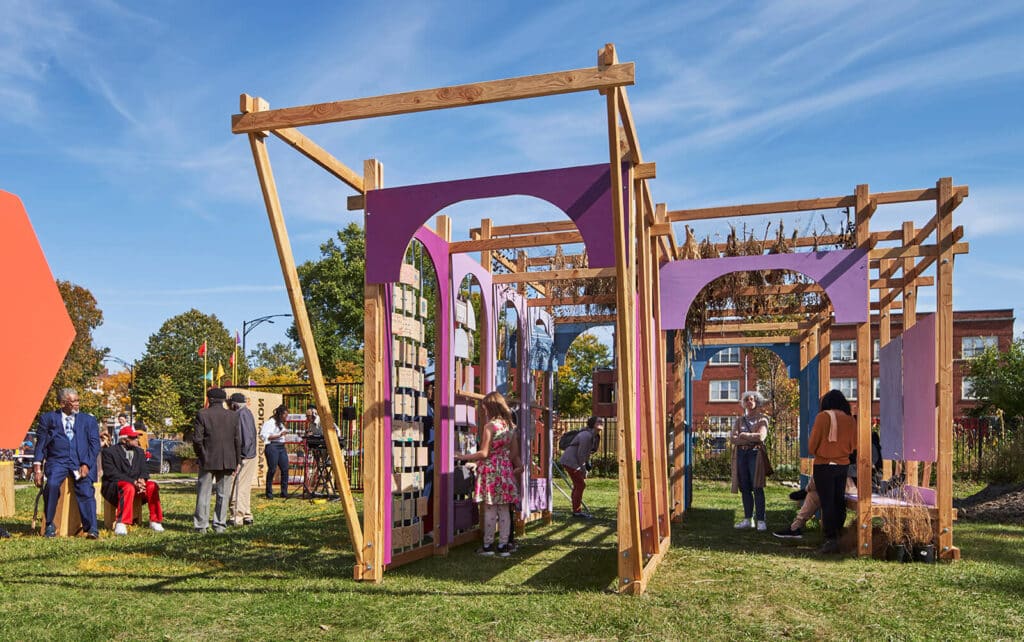
The Sukkah Design Fest built relationships amongst residents in North Lawndale and connected them to different organizations around the city as they planned music, food, and cultural programming. Architects, community members, and community organizations all came together to unite diverse groups of people that would have otherwise not likely come into contact with one another. Sukkot is a holiday associated with food, gathering, and the harvest. The festival used these themes to encourage North Lawndale’s predominantly Black population to explore their neighborhood’s Jewish history alongside traditions of fellowship and kinship. These relationship-building events provided opportunities for residents to make a difference in their community and plan social justice projects from the ground up.
By uniting a diverse range of actors and facilitating collaboration, the Sukkah Design Festival provided valuable assets to an underserved community and empowered residents. The Stone Temple Baptist Church would like to make the Sukkah they designed alongside New Office a permanent mini-exhibition within the church. The exhibit would memorialize the cooperation achieved through Black and Jewish communities through the design festival and preserve a valuable historical artifact to North Lawndale. Stone Temple is currently collecting donations to help fund the installation of the mini-exhibit.
